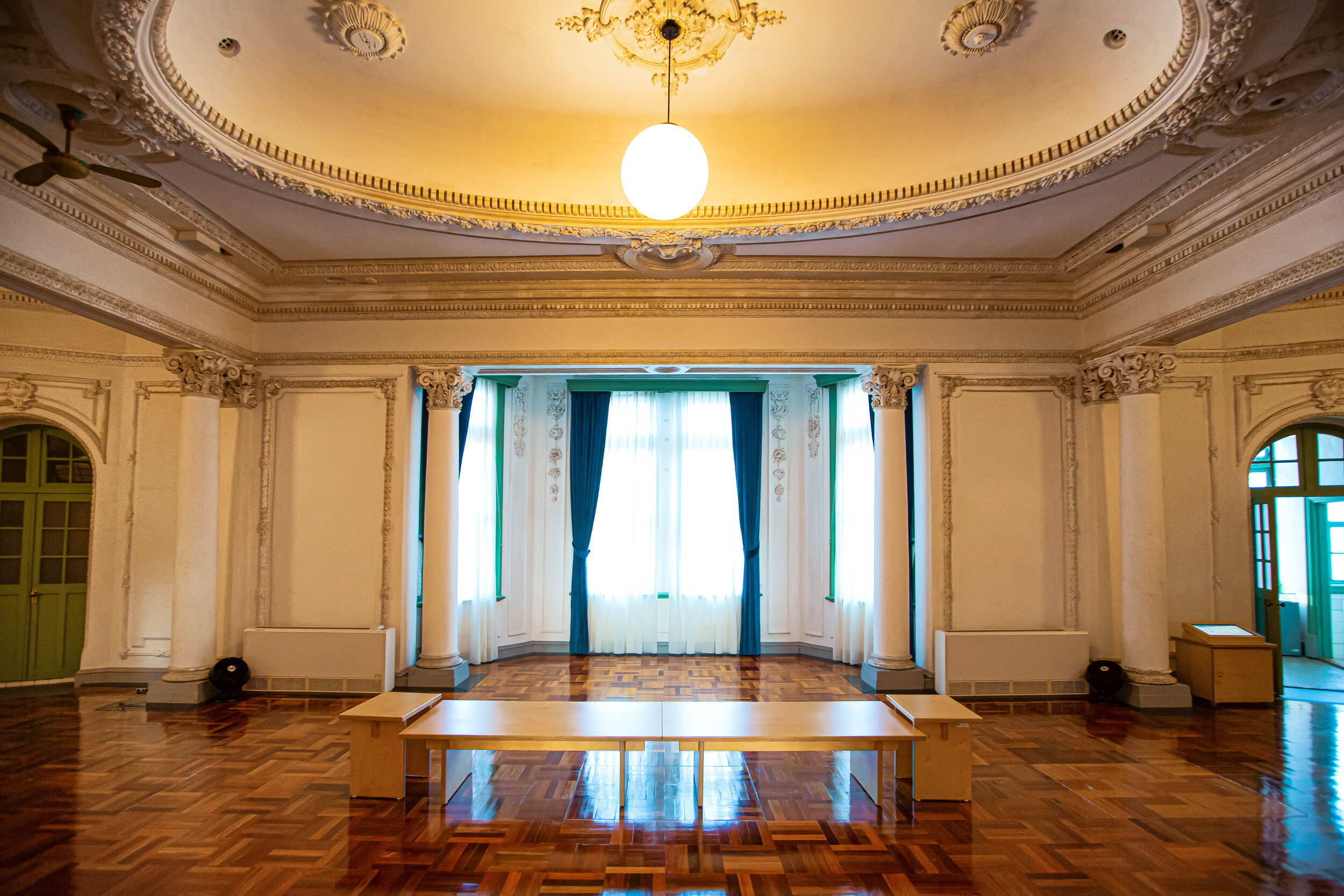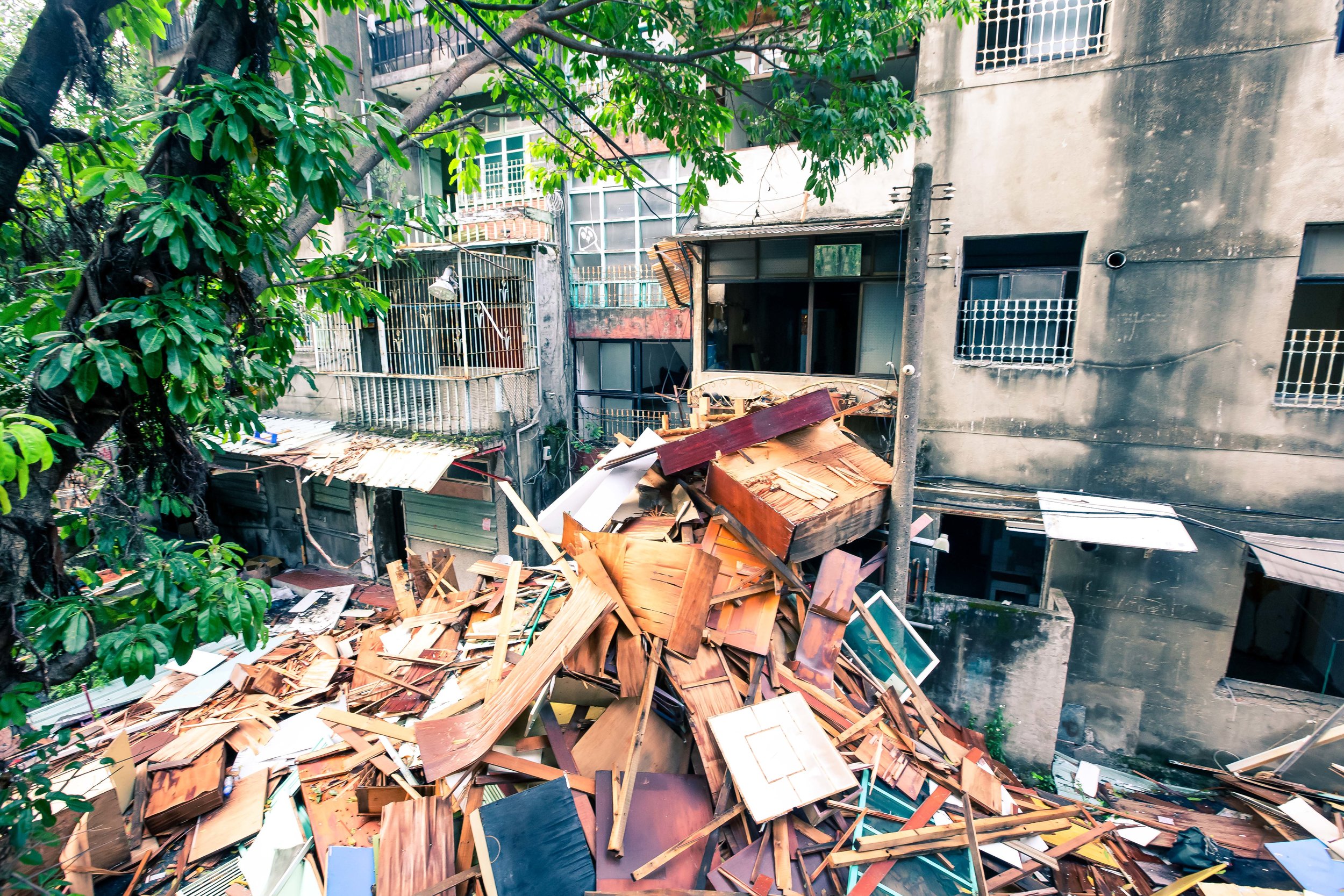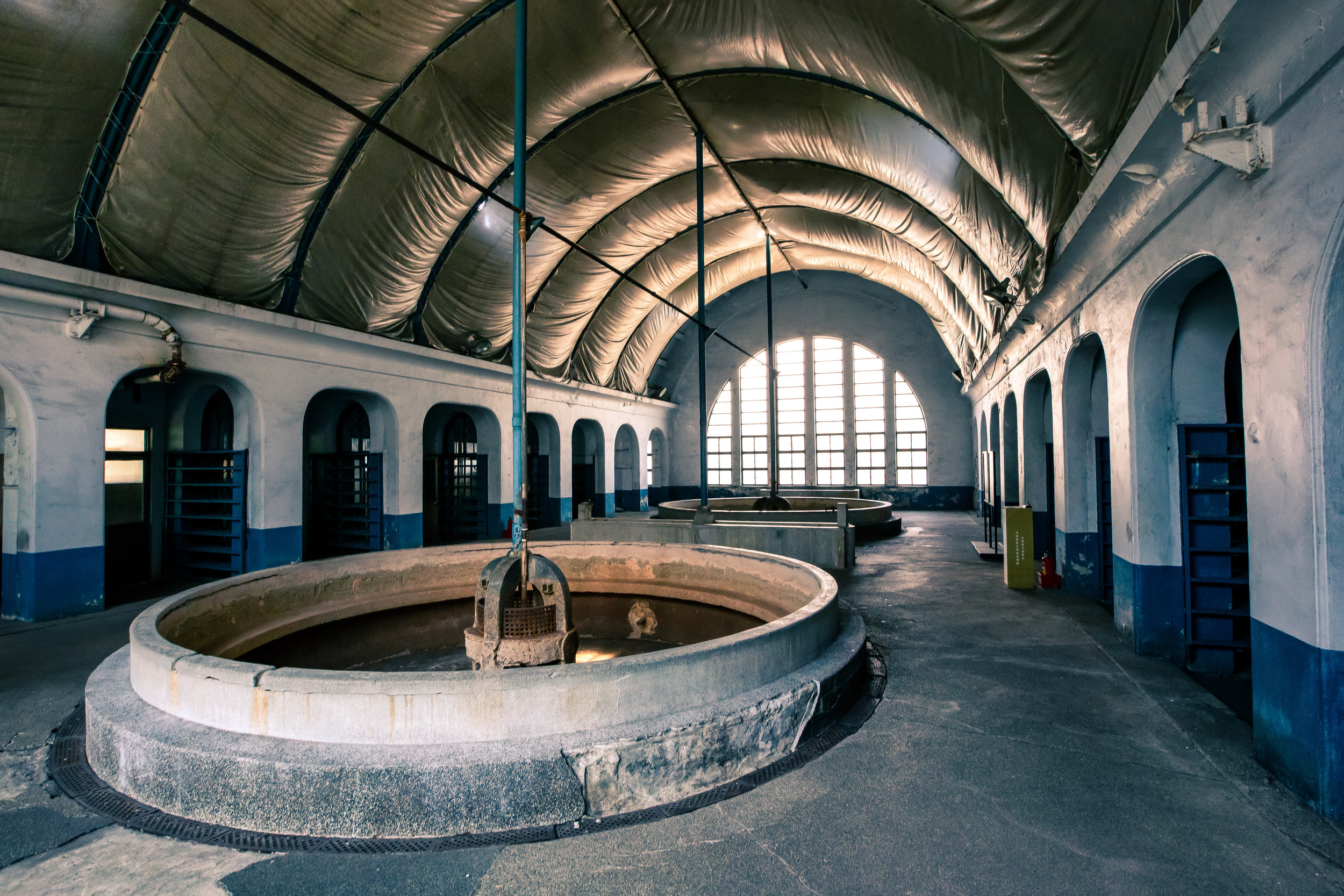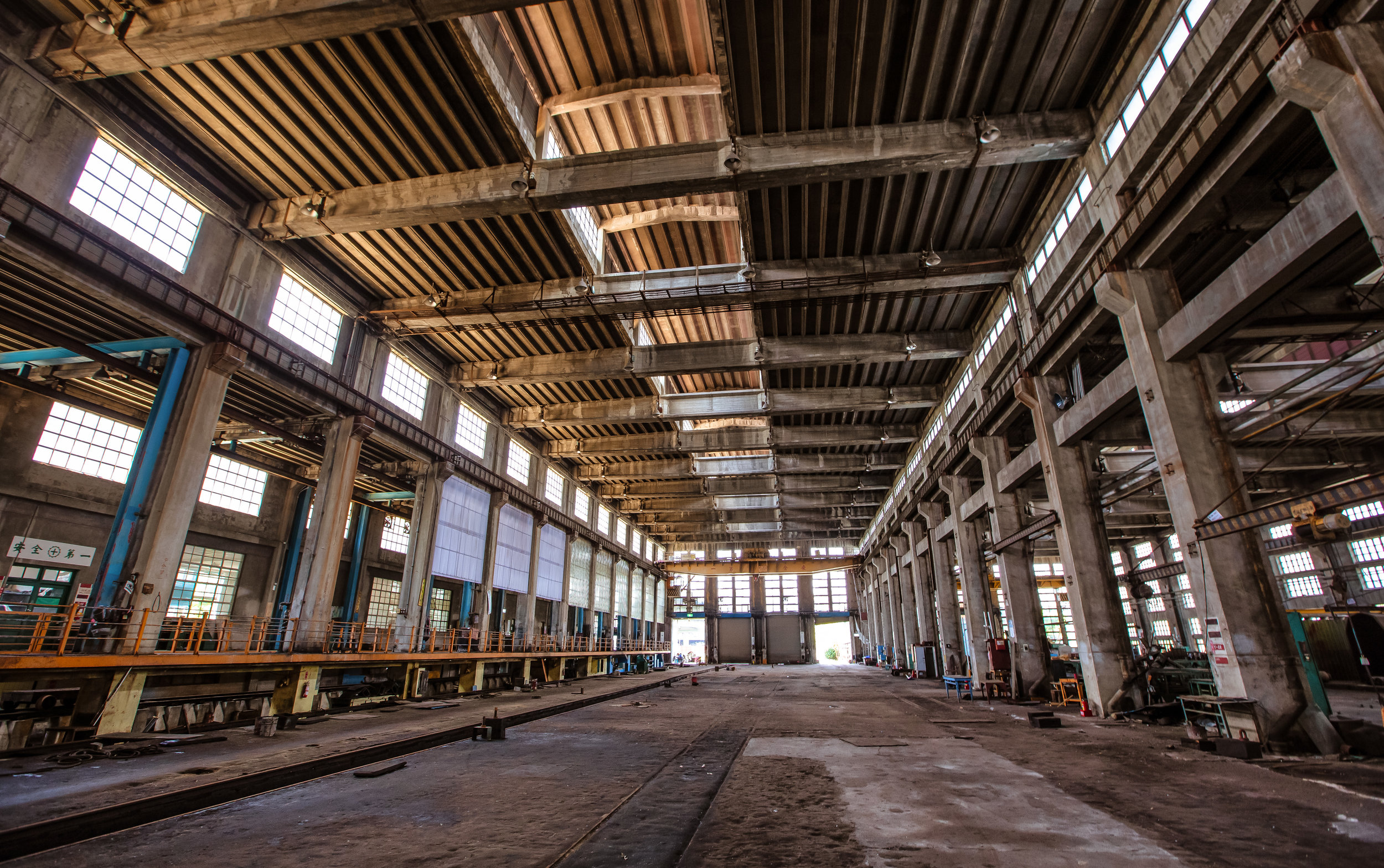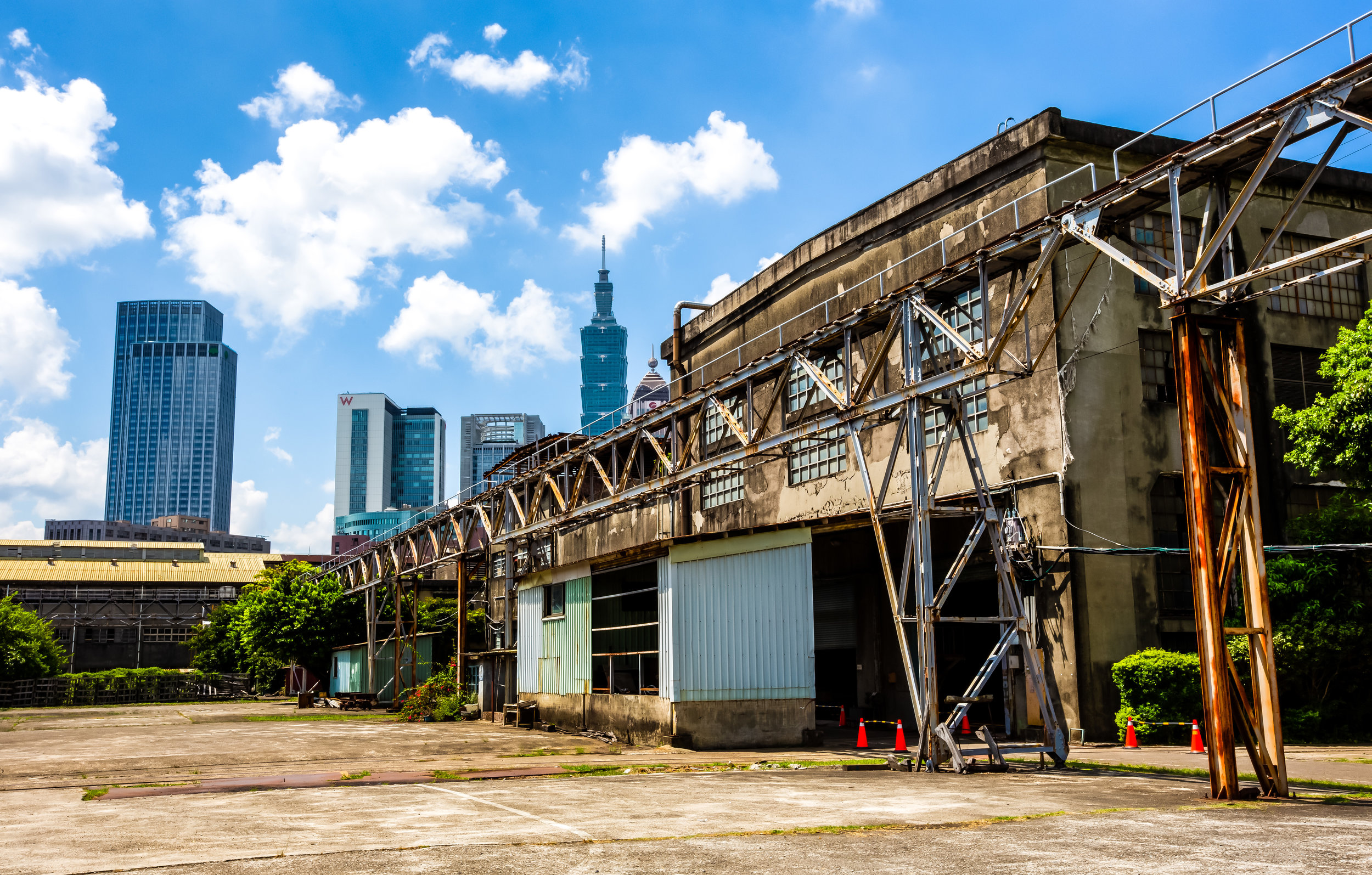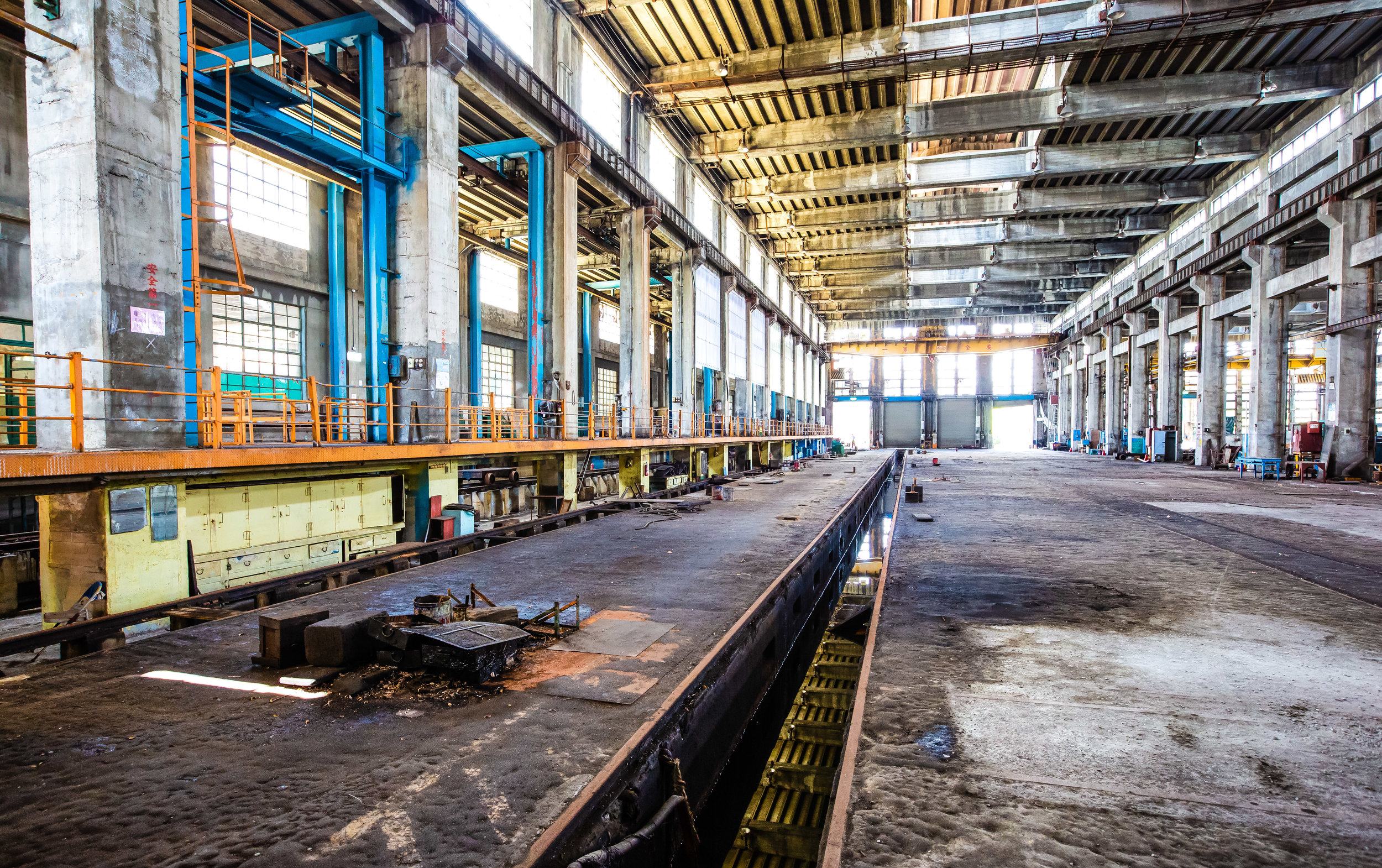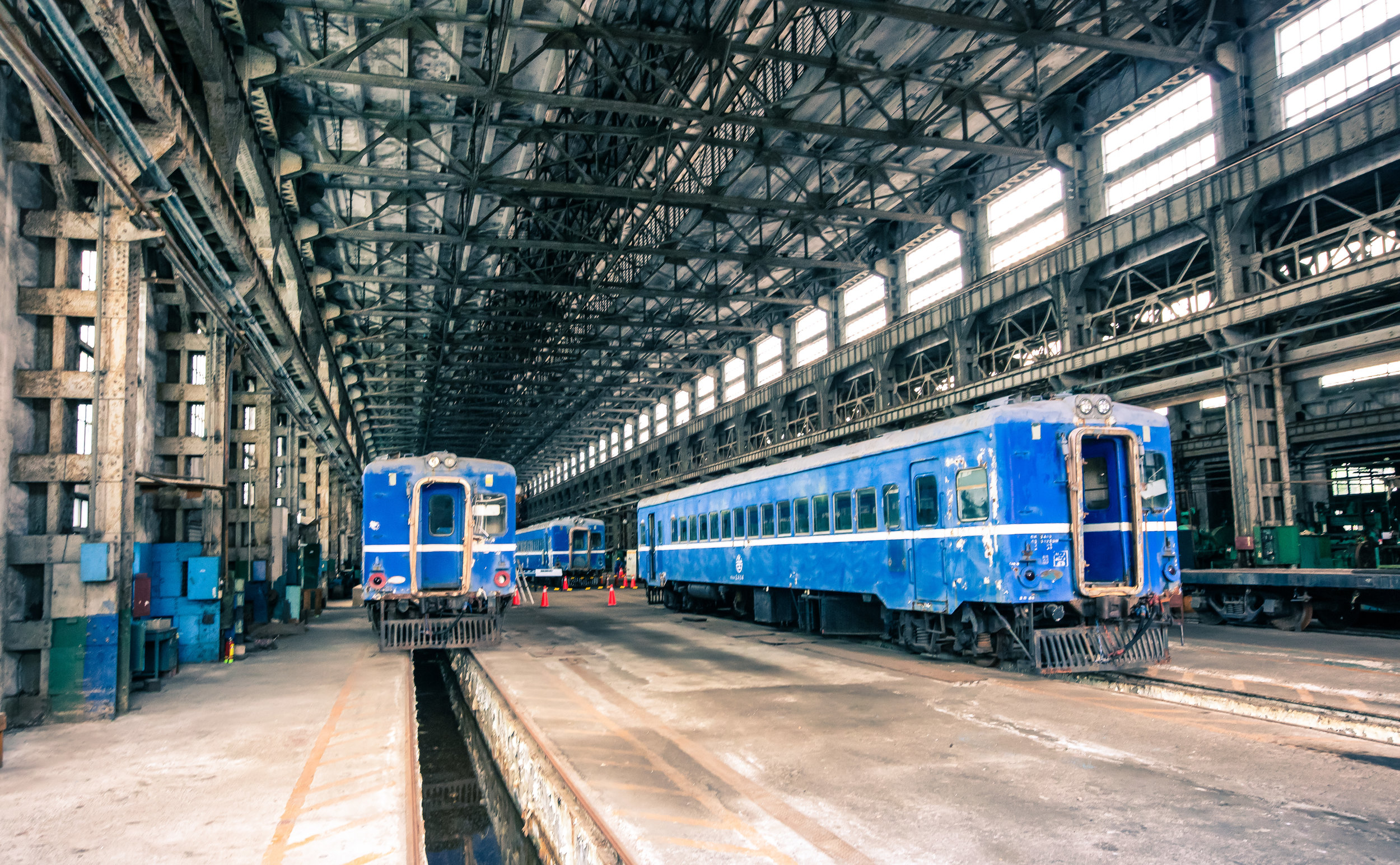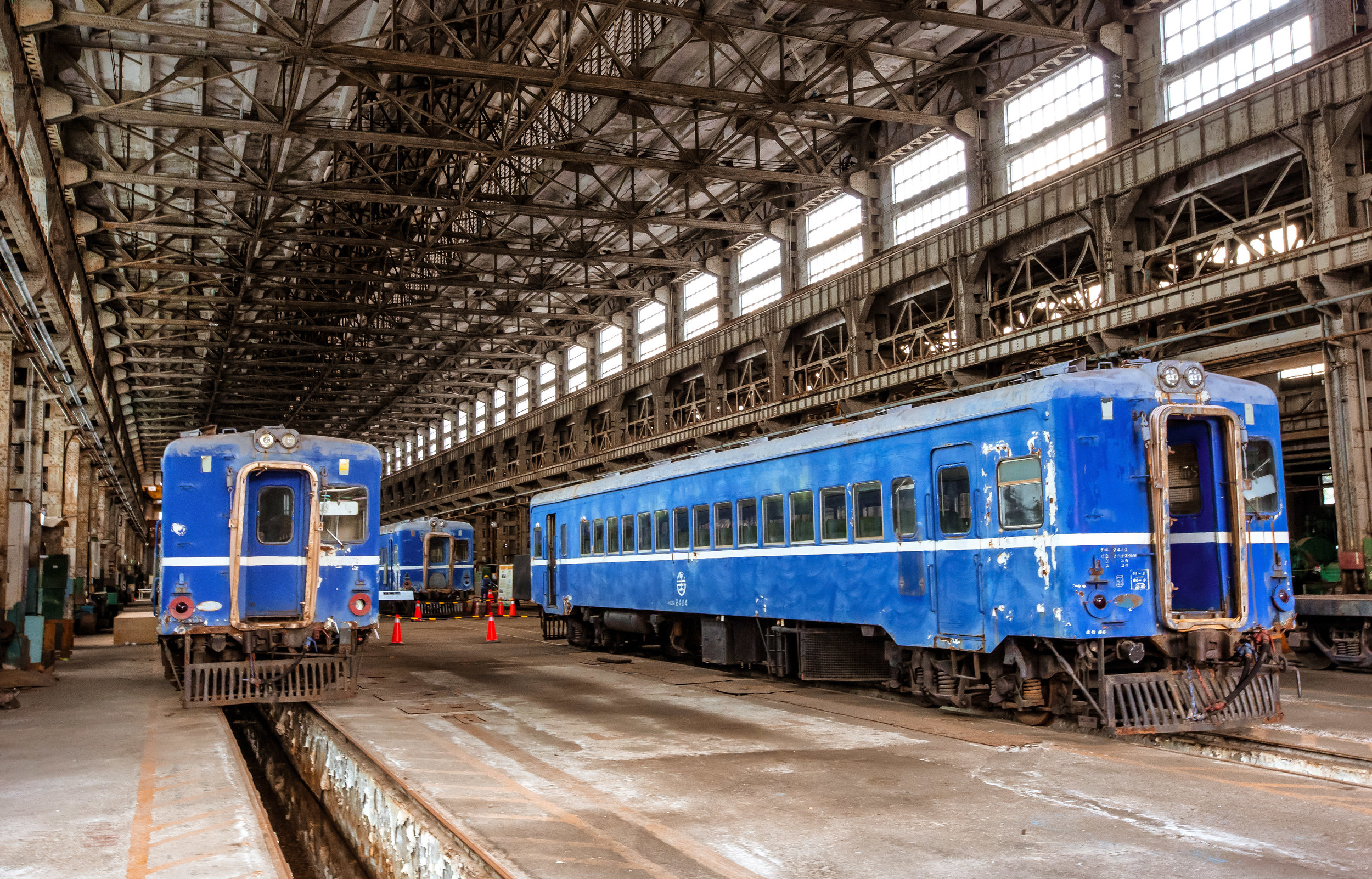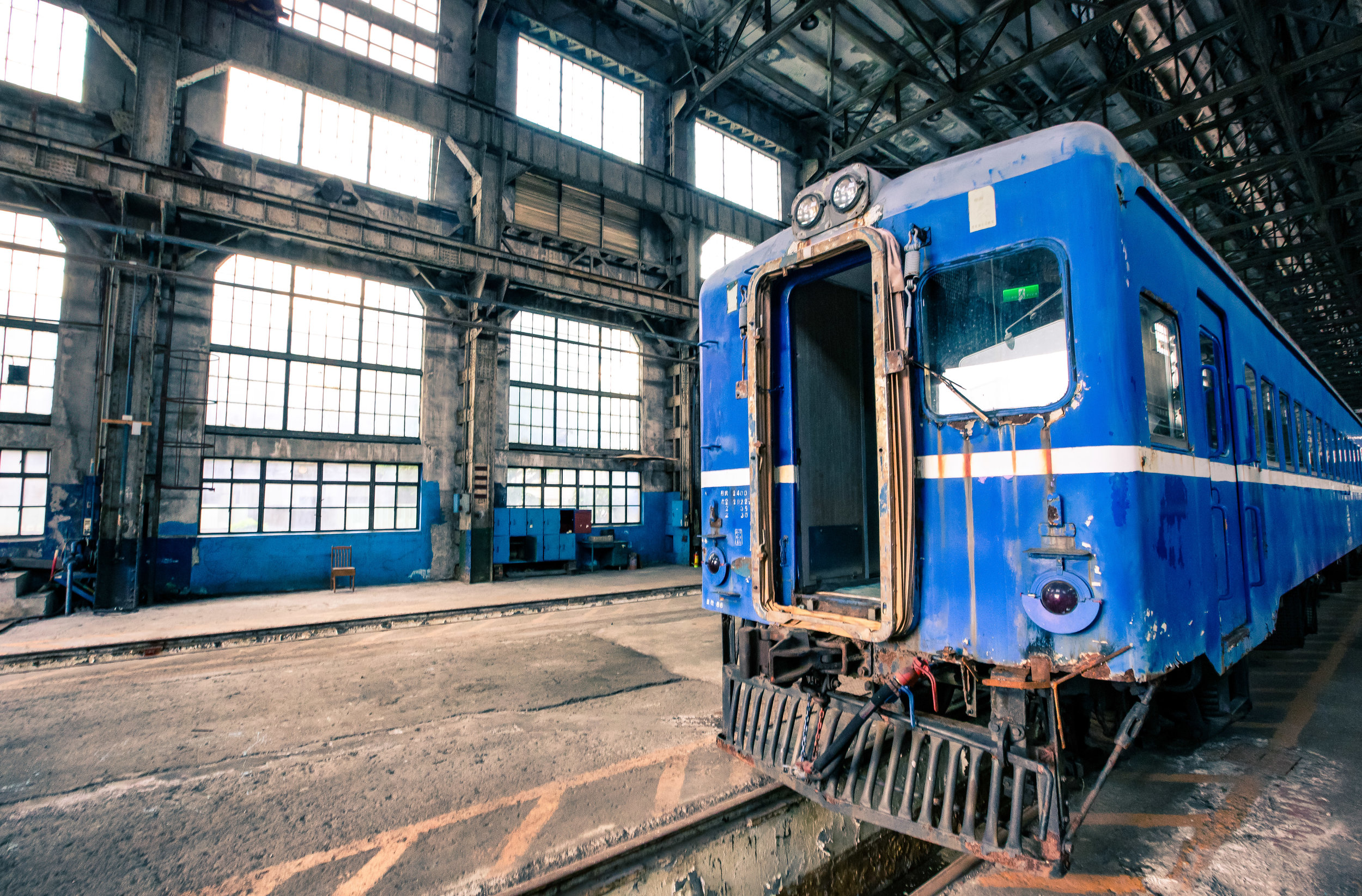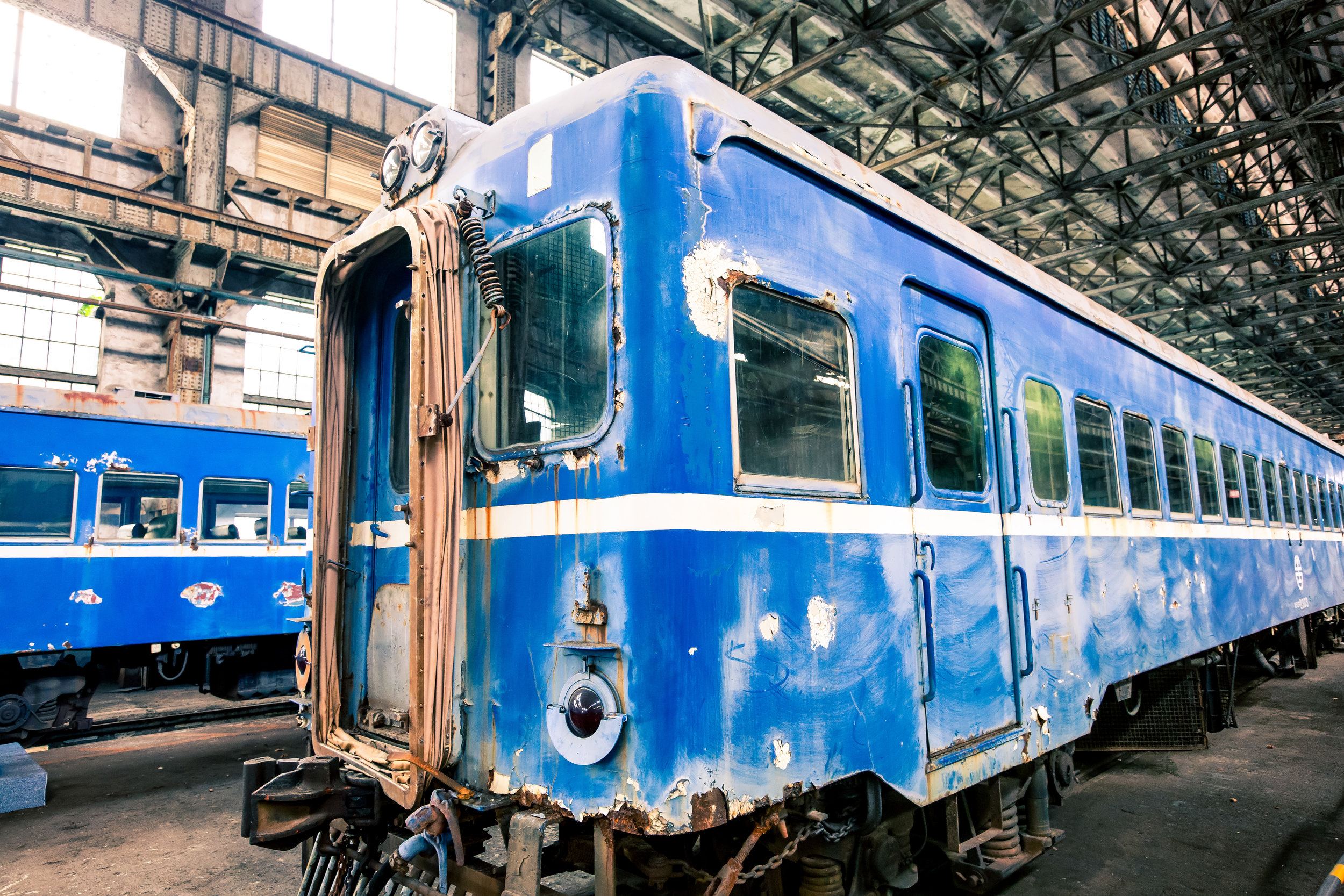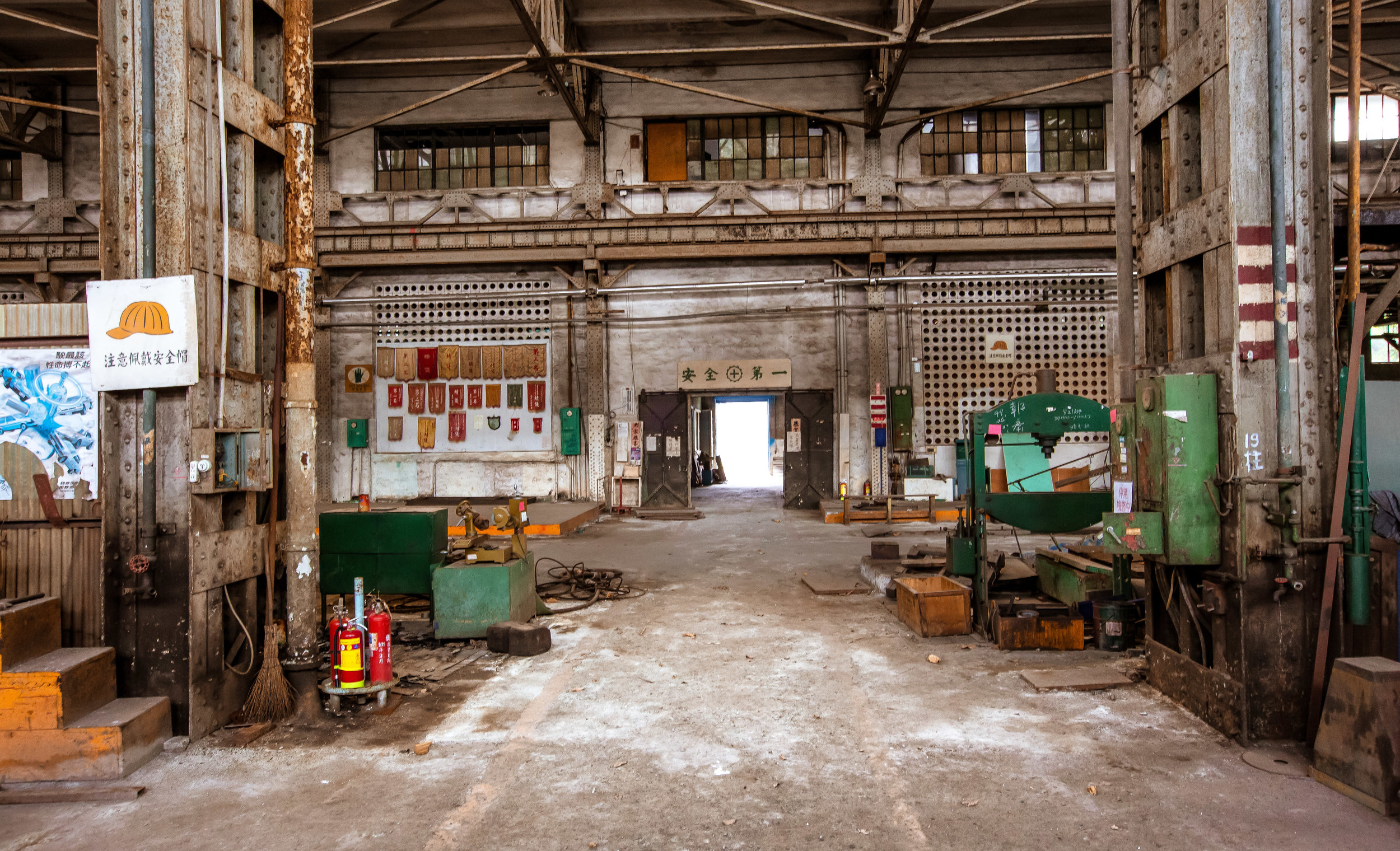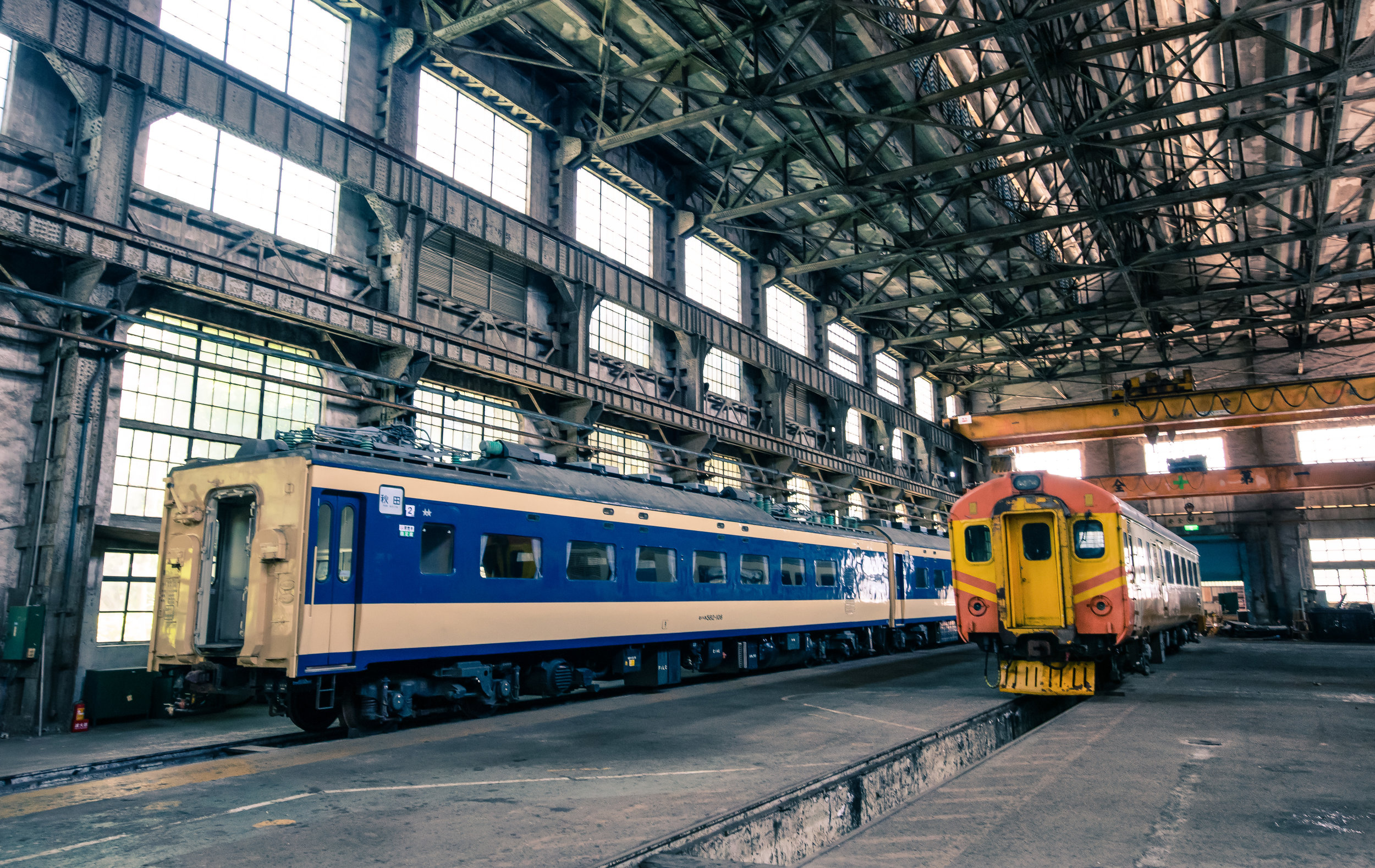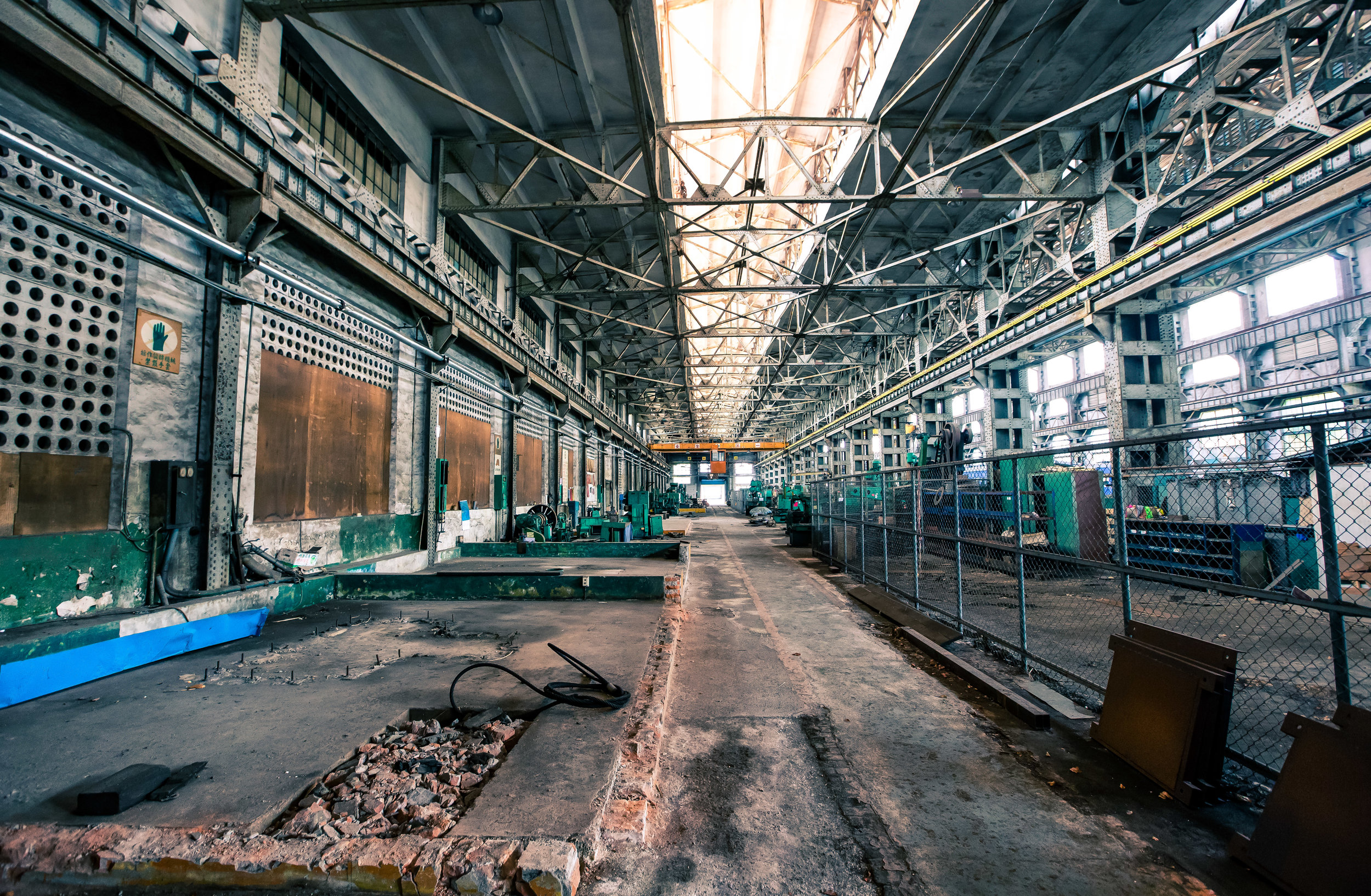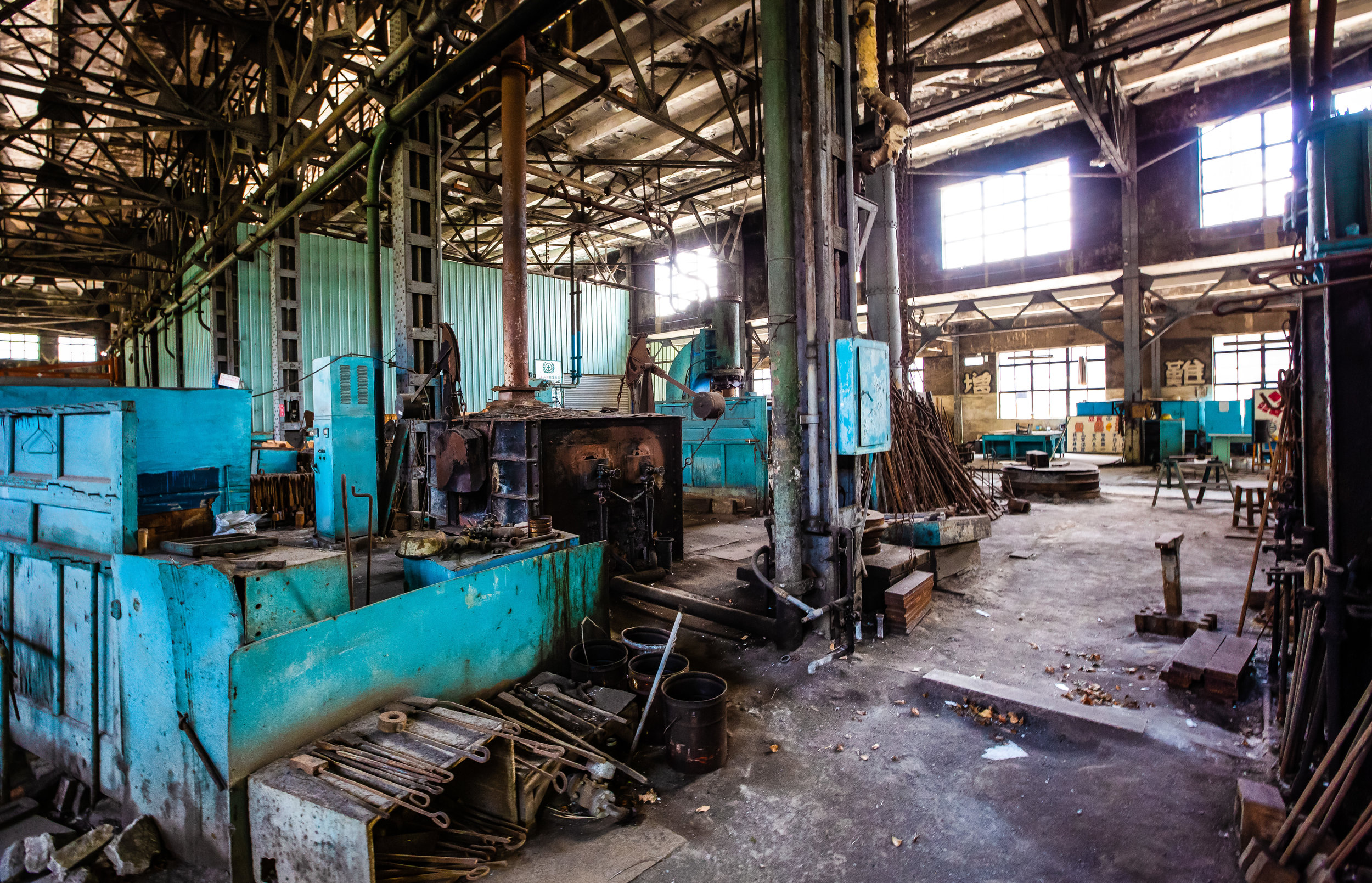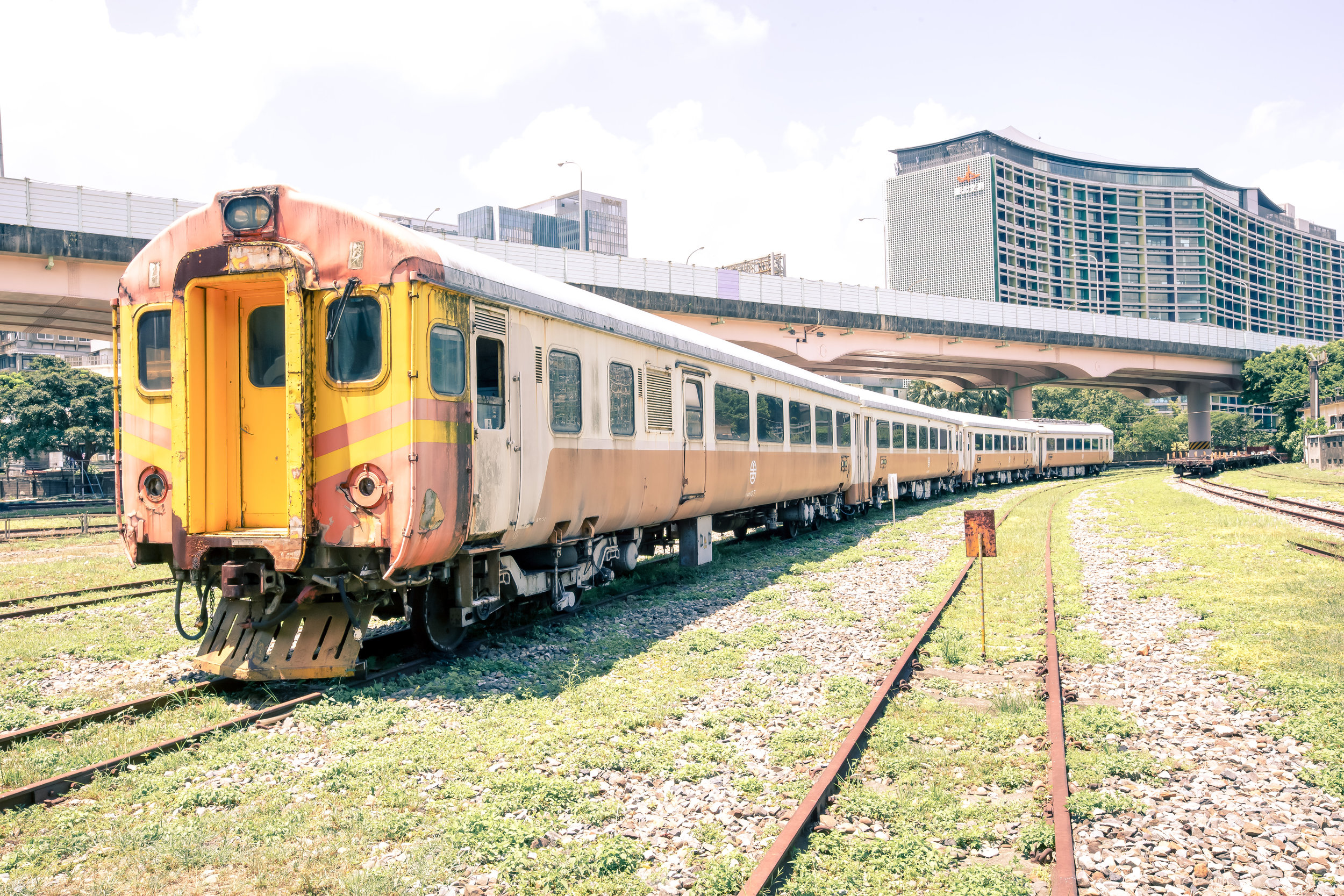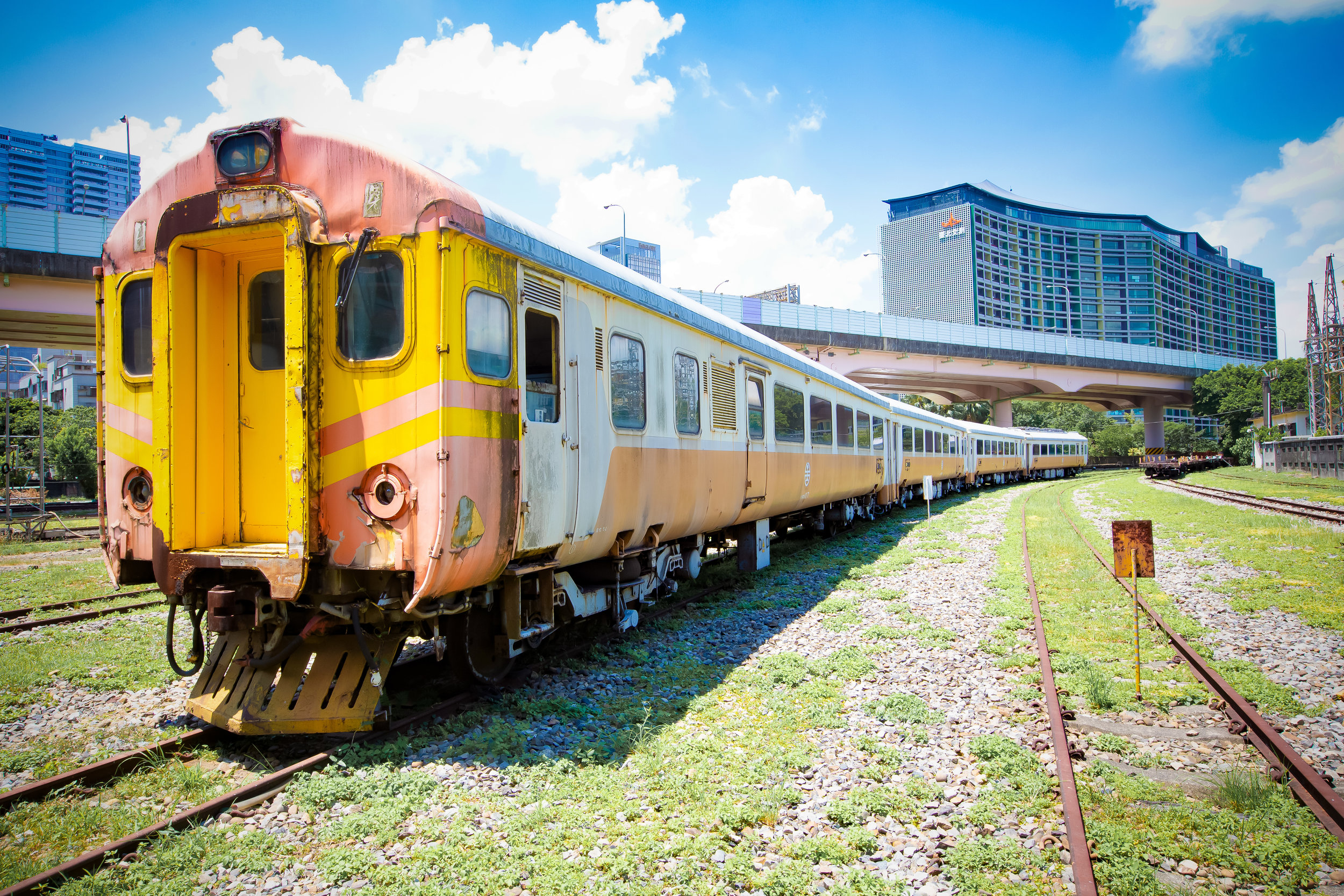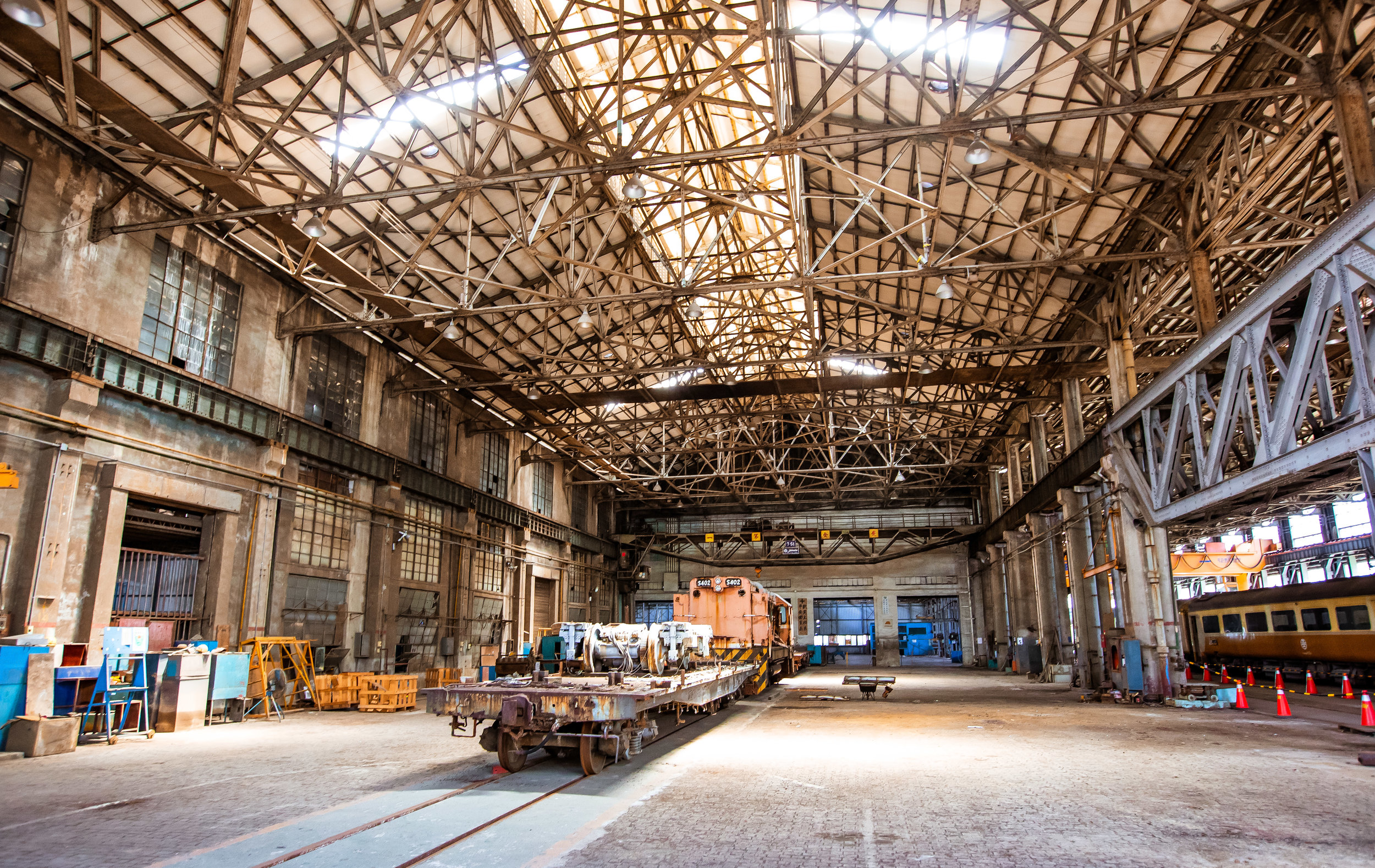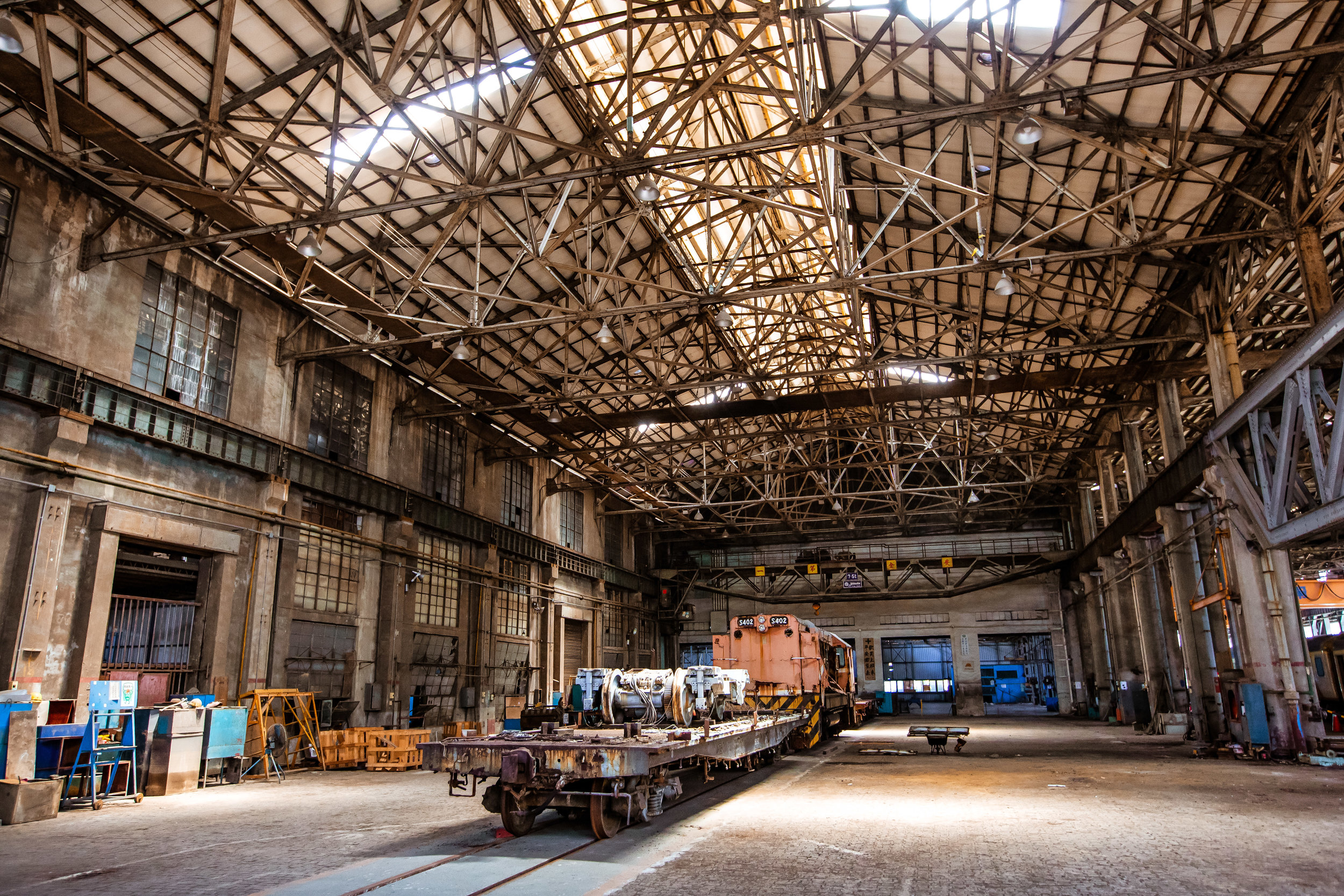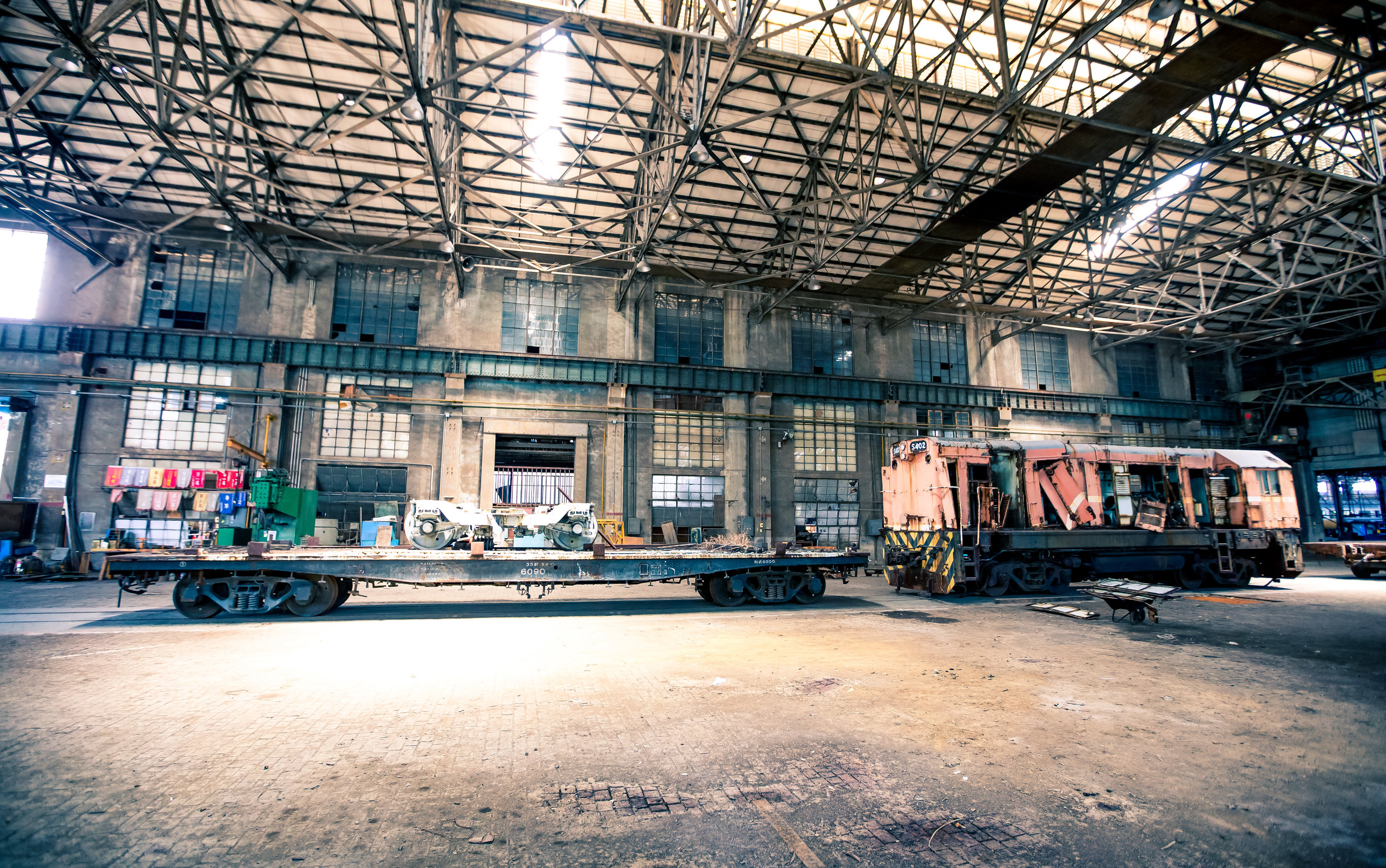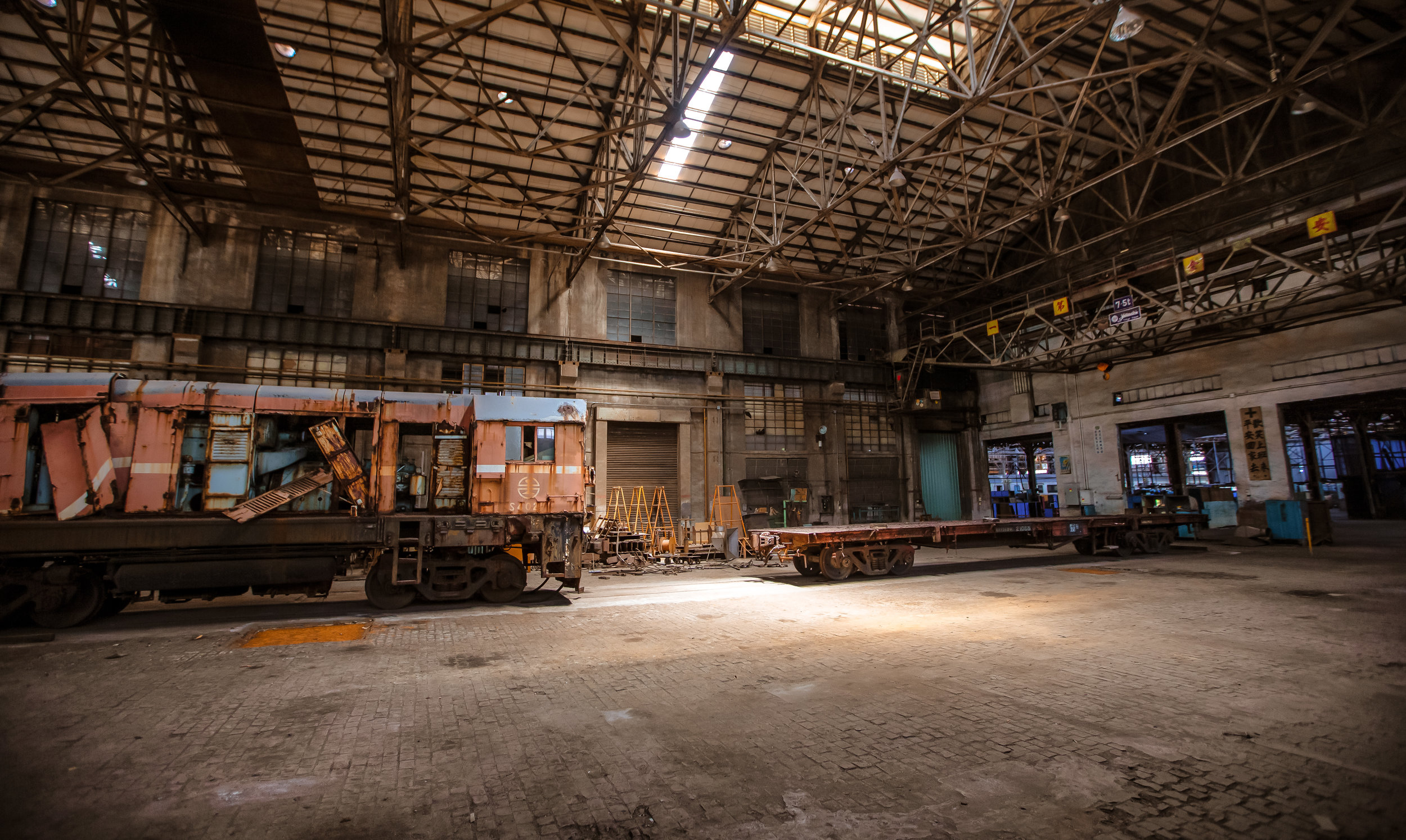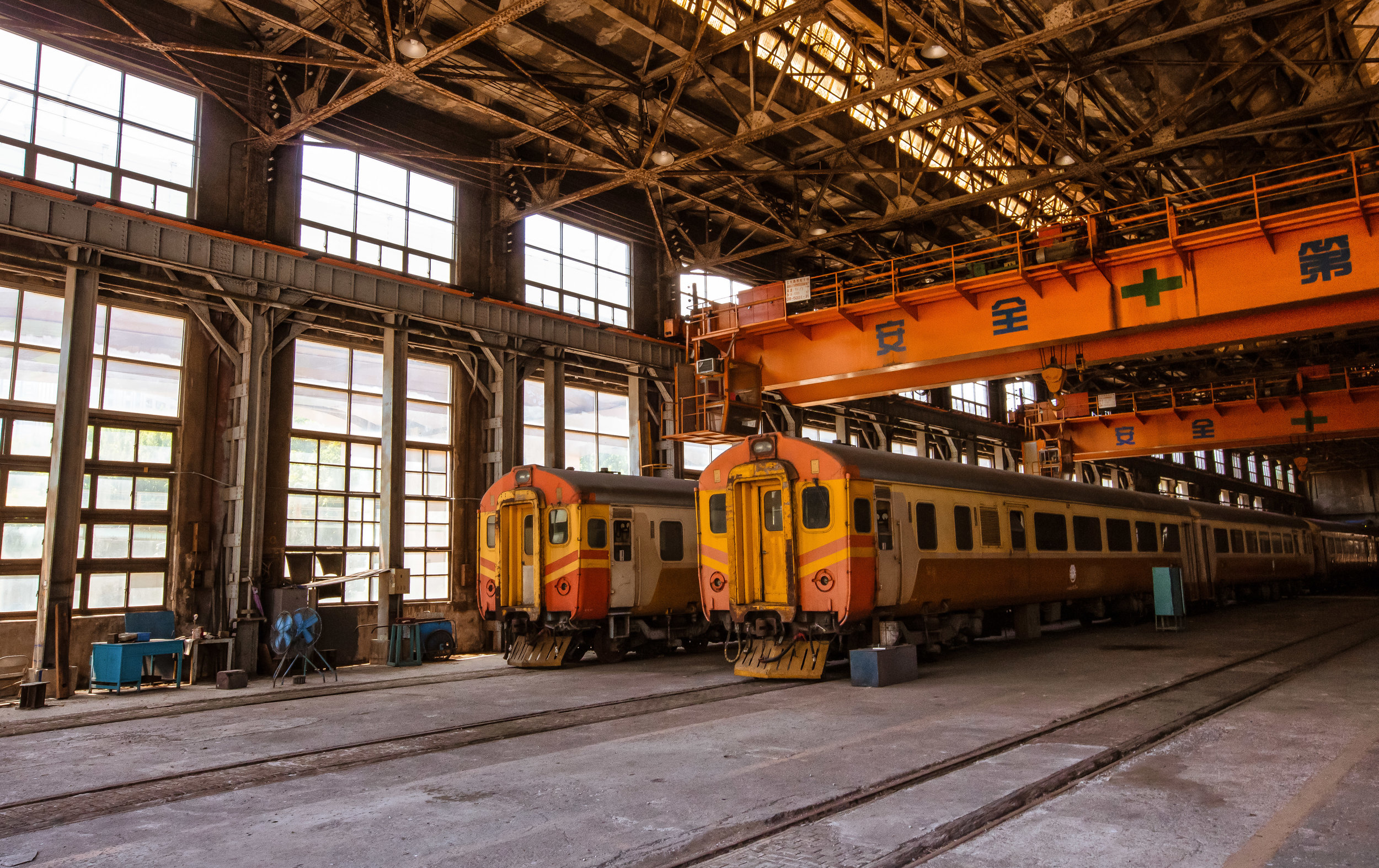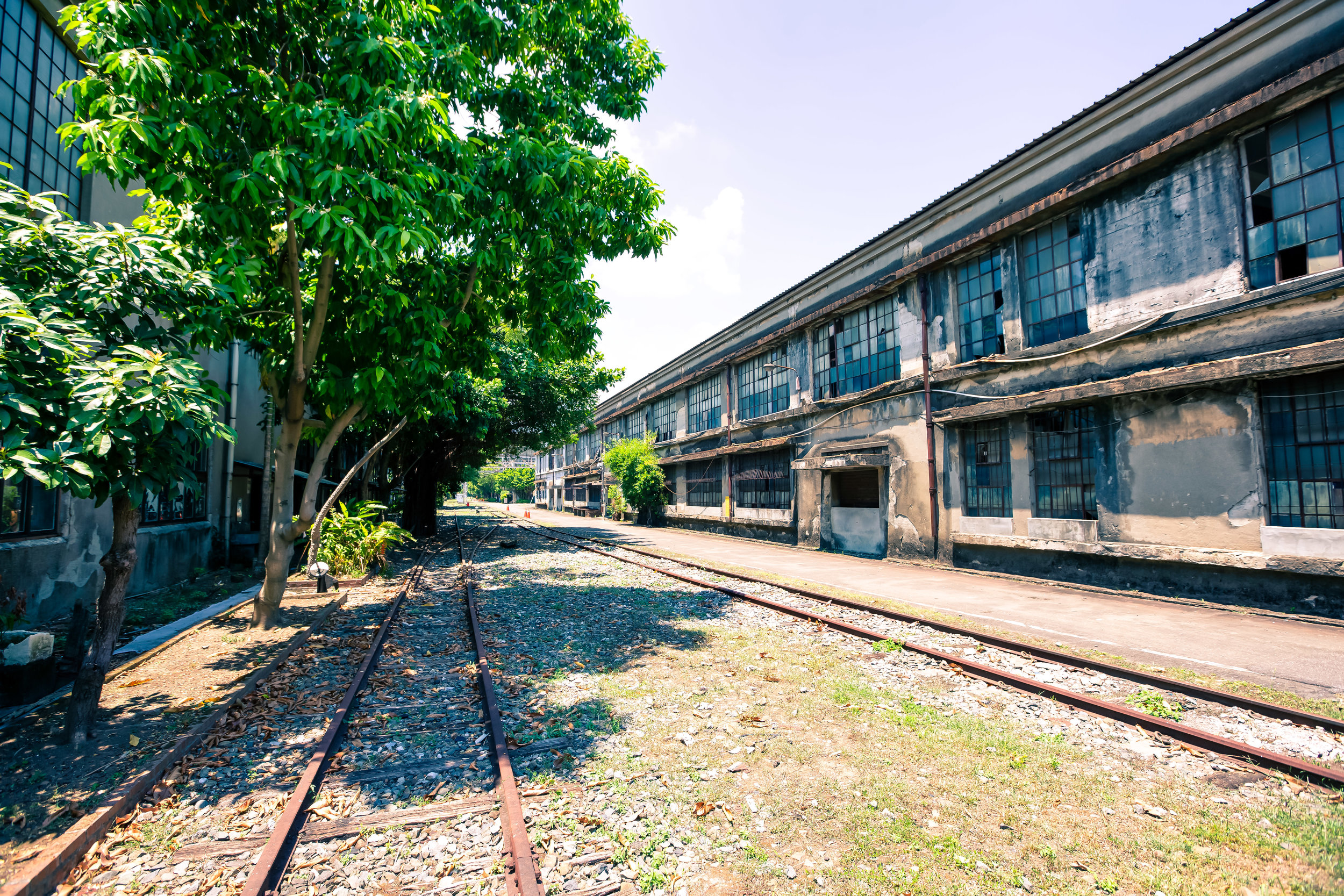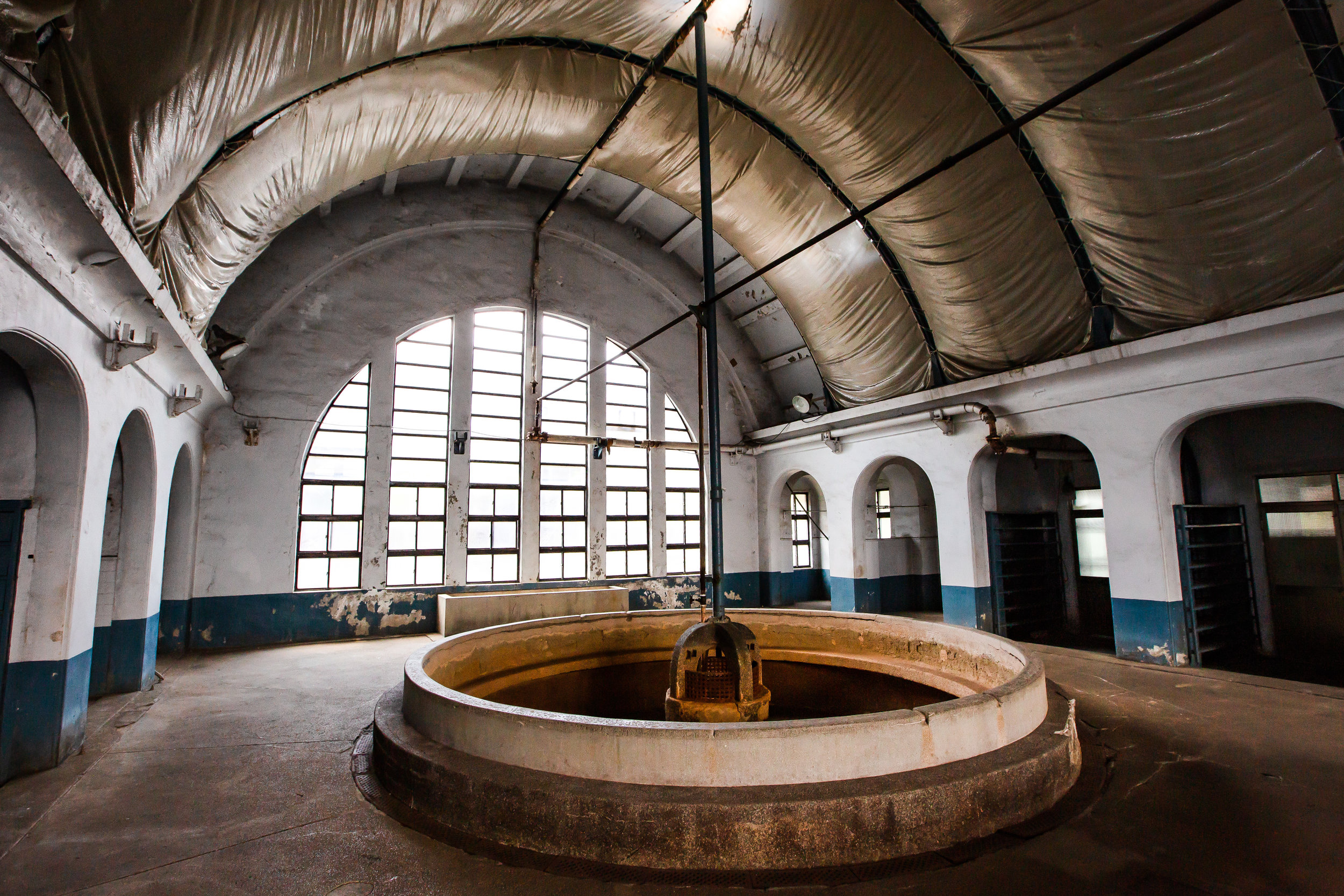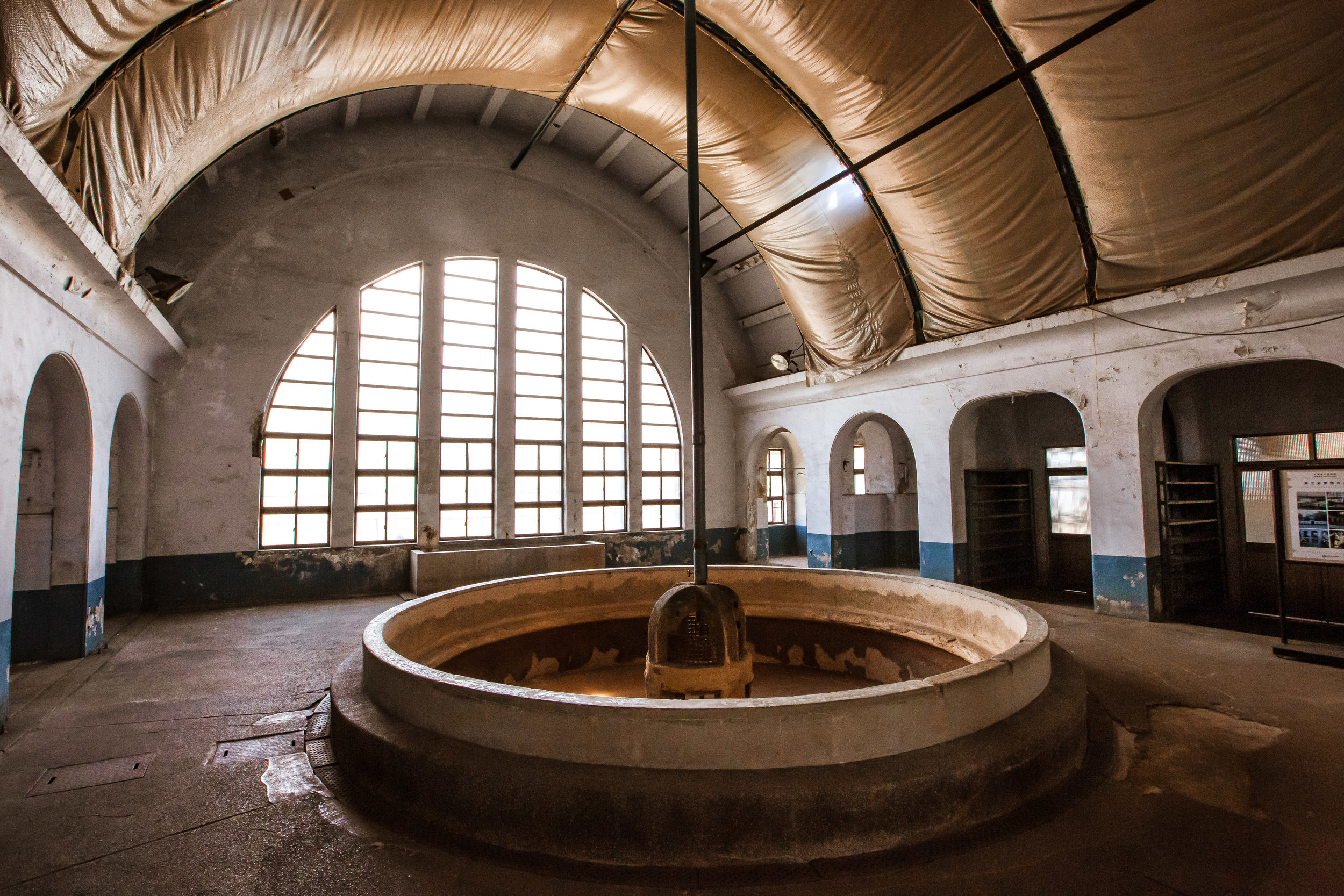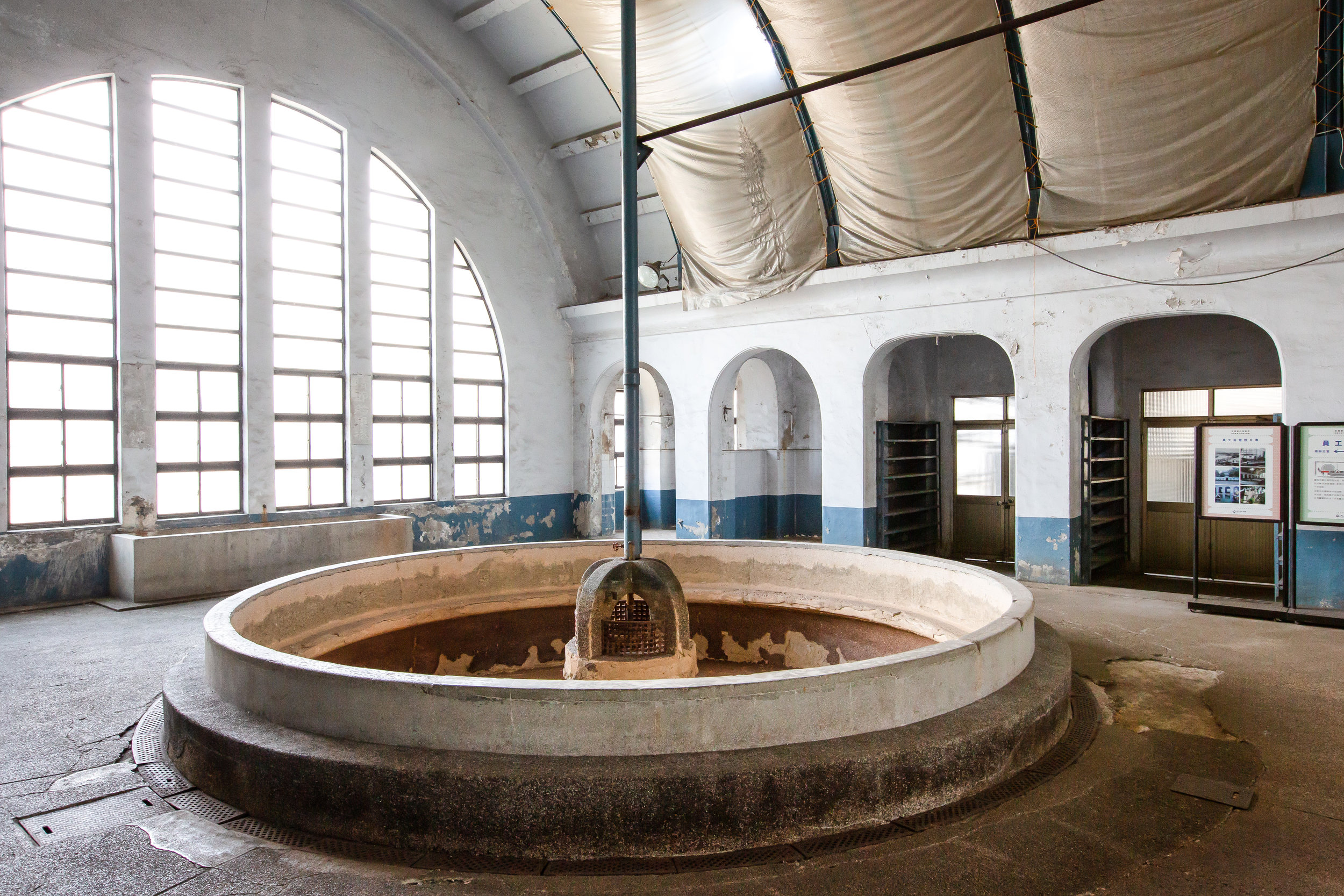I’m a big fan of museums - and I think you should be too.
Whenever I travel to a new country, I always make sure to reserve a bit of my time to check out a museum (or three), especially if it relates to the history of the place I’m visiting.
That being said, you might have noticed that I don’t post much on here about museums.
Why? Well, even though there are often some really cool displays, I don’t really see much value in taking photos in museums, at least for the purpose of this blog. This is also why you haven’t seen me write anything about (and probably never will) Taipei’s famed National Palace Museum.
Admittedly, I’ve likewise never really been all that impressed with Taiwan’s museums.
Most of the time I feel like museums here are a bit of a missed opportunity - It’s almost as if museum staff have some great ideas, but when they request funding, they only end up being allocated about a tenth of what they were asking for and then have to make due - which is sad to say, half-assed.
So, when I heard that the former Taihoku Railway Bureau was being reopened as the “Taiwan Railway Museum,” I wasn’t feeling all that optimistic.
But even if what was prepared for display in the museum wasn’t that impressive, I was still highly anticipating a visit as I’d finally get the chance to enter the beautiful Japanese-era building that I’ve passed by several times a week for well over a decade.
Fortunately for me, while the museum was still going through its soft-opening, I was invited to come check it out and get some photos. I don’t know how I get so lucky sometimes, but just like the Taipei Railway Workshop, I was honoured to be part of the first group of people who got to visit.
And I’m pleased to say, my initial pessimism about the museum was way off.
I might even go as far to say that this museum is probably one of the best in Taiwan.
Not only are all of the displays well-researched, well-designed and offer multi-lingual explanations, they’re set up in a way that nothing is out of place.
The whole thing is a well-rounded and obviously a well-thought up exhibition about the nations railway history, which if you weren’t already aware was instrumental in developing Taiwan into the beautiful country that we enjoy today.
Oh, and if you’ve got a camera, the museum is housed within one of the capital’s most iconic buildings, and is great for photography!
The Taihoku Railway Bureau (鐵道部)
Before we talk about the museum, it’s important to talk about the iconic building that houses it.
The “Railway Department of the Governor General of Taiwan” (台灣總督府交通局鐵道部), a National Historic Site, which is better known as the “Taihoku Railway Bureau” (鐵道部), was an administration centre for the management and operation of Taiwan’s railways during the Japanese Colonial Era and for several decades after.
Located a short distance from Taipei Station and the North Gate (北門), the Railway Bureau dates back well over a century and the buildings within the complex occupy a piece of land that has considerable historic significance.
It probably goes without saying that the Taipei of a century ago was considerably different than what we’re used to today - The narrow stretch of land between the Keelung River and where Taipei Station is located today has been an important location for the development of Taiwan’s railroad since the late 1800s.
The first iteration of the ‘Taipei Station’ opened in 1891 in ‘Twatutia’ (大稻埕), which we refer to as Dadaocheng today, when the rudimentary railway between Keelung and Taipei opened for service.
Prior to the Japanese takeover of Taiwan, the Qing constructed a rudimentary railway factory just west of where the Railway Bureau stands today, which was used to do maintenance on the track constructed between the port of Keelung and Taipei in addition to taking care of the trains.
When the Japanese took control of Taiwan a few short years later, the site was utilized by the army for a short time as a munitions depot before it was handed over to the railway department.
When the Japanese arrived in Taiwan, not much time was wasted on getting to work on the development of an island-wide network of railways. So when construction was nearing completion on the northern Taipei-Tamsui line, the workshop had to be expanded and modernized.
So, in 1909, the factory was relocated to a new building nearby and renamed the “Taipei Railway Factory.”
The original buildings at the Qing factory were later torn down and the land was converted into a community of dormitories for civil servants - some of which still exist today!
As progress on the construction of a a network of railways around the island continued, it also became necessary for the colonial government to relocate the administrative section of the railway bureau to a new headquarters in order to manage the day-to-day operations of the railway as well as ensuring that construction on the various rail lines went smoothly.
Given the importance of the railway for Japan’s ambitions for Taiwan, the office that was constructed for the Railway Bureau would have to be something grand.
Thus, the responsibility for its design was given to Moriyama Matsunosuke (森山松之助), the architectural genius who was responsible for many of Taiwan’s most famous buildings, including the the Taipei Prefectural Office (台北州廳), Taichung Prefectural Office (台中州廳), Tainan Prefectural Office (台南州廳), the Monopoly Bureau (專賣局) and the Government-General of Taiwan (台灣總督府), which is currently known as the Presidential Office Building (總統府).
Link: The helmsmen who shaped the style of Taipei City (Taipei Times)
Coincidentally, the Taiwan Railway Bureau and the Government-General of Taiwan building just so happened to be inaugurated on the same day (March 31st, 1919) and afterwards Moriyama commented: “My work here is done!” (台灣已經沒有什麼可做的了) and he left Taiwan a year later with a long list of accomplishments.
I thought it was a bit strange that both the Railway Bureau and the Government-General of Taiwan building (currently Presidential Building) opened on the same day, so I decided to do some research on the subject.
The Japanese never really do anything at random, so there had to be a reason - whether it was a holiday or an anniversary - that they inaugurated both of these important buildings on the same day.
Unfortunately after several hours of digging, the only thing I could find that related to “March 31st” was the end of the so-called military government (軍政) and the start of civil governance almost two decades prior. The thing is that the final day was “3/31” and the first day was “4/1”, which probably meant that I hadn’t found the right answer.
So, I enlisted the help of a local history guru who I’m happy to call a friend who did some searching for me.
After a few hours he got back to me and said he was having difficultly, so he left a message with one of the research heads at the National Taiwan Museum who got back to him and answered: It’s because March 31st marked the traditional end of the fiscal year in Japan.
This is what I get for overthinking things.
When the Railway Bureau opened for operations in 1919, construction on the building was only completed the north wing and the front facade of the building when they started to move in.
It would take another year until the south wing was completed and over the next few decades, several additional buildings constructed on the site, which eventually totalled around forty.
You might be wondering how this was possible given the lack of space on the site.
It was all thanks to the relocation of the Taipei Railway Workshop (which is also now a protected property) to a new location, freeing up quite a bit of space. The railway workshop at one time featured prominently on the site of the Railway Bureau, but as the decades passed and the railway network continued to expand, it became apparent that the workshop was far too small to perform all of the duties required to maintain the trains.
So, a much larger one had to be constructed and was officially opened in 1935 on the fortieth anniversary of Japanese Colonial Rule in Taiwan, which also coincided with the opening of the Taiwan Exposition, which was a huge year in Taiwan in terms of events.
Unfortunately, in the midst of all the development that was taking place here in Taiwan, the Japanese Empire found itself involved in a little something called the Second World War as one of the major instigators.
And we all know how that went for them.
When the Japanese surrendered to the allies at the conclusion of the war, they were forced to relinquish control over the territories that they had conquered, including Taiwan. This left the question as to what would happen to the island and who would control it.
Ambiguously, the allies decided that control of Taiwan would be offered up to yet another foreign power, the Republic of China, which itself was in the midst of a bitter civil war against the communists.
In 1945, when the Chinese Nationalists formally took control of Taiwan, the Railway Bureau became the new headquarters for the Taiwan Railways Administration (臺灣鐵路管理局), which quickly got to work repairing the parts of the track that were destroyed during the war. This helped to ensure that the government could maintain control of the island as well as taking advantage of the economy that the Japanese developed.
The Taipei Railway Bureau continued to serve as the headquarters of the Taiwan Railways Administration from the late 1940s until 1990, when it moved to its new home within the upper floors of the newly constructed Taipei Railway Station.
In the 90s, the Taiwanese government wasn’t as keen on historical preservation as it is these days, so when the TRA moved out, it was left abandoned for quite some time.
Soon after the move, the interior became a setting in renowned Taiwanese director Edward Yang’s (楊德昌) film, “A Brighter Summer Day” (牯嶺街少年殺人事件).
After that though, not much happened at the Railway Bureau until construction on the Beimen MRT Station project started and a large portion of the forty buildings on site started disappearing.
As a result, in 2009, the Railway Bureau was certified as a National Historical Monument (國定古蹟) by the Ministry of Culture (文化部) and plans were made to restore the remaining ten buildings into a public space.
The restoration project on the buildings started in 2014 and would take several years to complete with the Taiwan Railway Museum officially opening to the public to much fanfare in 2020, during the height of the global COVID-19 pandemic.
Timeline of Important Dates for the Railway Bureau
1887 - Plans for the first railroad in Taiwan are started by governor Liu Mingchuan (劉銘傳).
1891 - Construction on the railway between Keelung and Taipei is completed.
1893 - Construction on the railway between Taipei and Hsinchu is completed.
1895 - The Japanese take control of Taiwan.
1901 - The Railway Bureau, a sub-department of the Governor Generals office is formed.
1901 - The first branch line (Taipei - Tamsui) of the railroad is completed.
1908 - A proposal is made to relocate the original workshop and the railway bureau to a new site nearby.
1909 - The Taipei Railway Workshop is relocated east of its original location.
1918 - Construction on the new headquarters for the Railway Bureau starts.
1919.3.31 - Phase one of construction is completed on the facade and north wing.
1919.5.28 - Railway Bureau employees start to move into the offices.
1920 - The south wing of the building is completed.
1933 - Construction of the cafeteria attachment to the Administration building is completed.
1934 - The Engineering Buildings are added to the site.
1935 - The Taipei Railway Workshop (台北機廠) is relocated to its current location.
1940-1945 - The railways are repeatedly bombed by the Allies.
1945 - Taiwan is ceded to the Republic of China (中華民國).
1948 - The Taiwan Railways Administration (台灣鐵路管理局) is established with the Railway Bureau as its headquarters.
1979 - The West Coast Rail is fully electrified.
1989 - Rail lines in Taipei are moved underground in preparation for the new Taipei Railway Station.
1990 - The new Taipei Train Station opens and the Railway Bureau building is left abandoned.
2000 - The Yilan line is fully electrified.
2006 - Construction on the Beimen MRT station takes place and several buildings are demolished and the former Taipei Workshop building was temporarily relocated.
2009 - The site of the Railway Bureau becomes a protected property with plans to restore it.
2014 - The restoration project on the site commences with ten of the original forty buildings being restored after the rest were demolished during the construction of the MRT.
2020 - The Railway Bureau opens to the public as the Taiwan Railway Museum.
Now that we have a lot of that history stuff out of the way, let’s talk a bit about each of the individual buildings that still exist today as part of the National Taiwan Museum Taipei Railway Bureau.
Administration Headquarters (廳舍)
While there are several historic buildings on site, let’s face it, the Administration Building (廳舍) is always going to be the one that attracts the most attention.
Not only is it the largest and most important building with regard to the history of the Railway Bureau, it was masterfully designed and is one of those iconic Taipei buildings that people have enjoyed for generations.
Now that it has reopened to the public as a National Museum, it has attracted quite a bit of attention as people are finally able to enjoy the interior as much as they’ve enjoyed the exterior.
The arc-shaped Administration building sits directly across from Taipei’s North Gate on the corner of Chung-Hsiao West Road (忠孝西路) and Yanping North Road (延平北路) with the front door facing another one of Taipei’s historic buildings, the Beimen Post Office (北門郵局).
As mentioned above, the building was designed by famed architect Moriyama Matsunosuke (森山松之助), and construction was completed in two phases with the first phase completed on March 31st, 1919 and the second phase a year later.
The two storey building consists of a beautiful front hall with a north and south wing running parallel to each other on either side.
Taking inspiration from English baroque, better known as Queen Anne style architecture (安妮女王復興樣式), the building is strongly characterized by its bilateral symmetry.
The lower half of the building was constructed using red bricks as a foundation, while the upper half was constructed with Alishan Cypress (阿里山檜木) in a style known as “half-timber framing” (半木構造), inspired by European architectural design, but with Japanese characteristics, of course.
Something you’ll want to take note of before entering the building is how the building curves from the front hall that faces the road.
The two towers that connect the north and south wings to the front hall were constructed at an angle, a classic baroque architectural trick that allows the building to take its arc shape.
Where the Japanese architects of that time excelled (with regard to baroque-style architecture) is easily noticeable with the of the roof, which is also a mixture of Western and Japanese-design characteristics.
In baroque design, a sense of ‘flowing movement’ is important and when it comes to this roof, it is expertly arched over both the south and north wings which meets with the front hall, which has its own arched roof facing the road, giving off somewhat of a 3D motion effect. Some might argue that the design here is ostentatious, but that was the point of baroque.
Adding to the design on the exterior, the roof is also home to ox-tail windows on both the front and back side of the building. While these windows perform their role of allowing natural light into the building quite well, the key thing to note here that the shape of windows on the front and back are shaped differently, with those on the backside being much more impressive.
That being said, credit needs to be given to the architect and the construction teams as construction of ox-tail windows like these is quite difficult, so even though they might just seem like windows protruding from the roof, you should take some time to check them out.
The main office on the second floor of the Main Hall features a beautiful veranda, while both of the wings have long two-meter wide passageways at the front and back of the the first and second floors, where people could get of the office for some fresh air.
However, as the ground level of the building was constructed with brick and the top level with cypress, there are some practical differences between the two. The veranda on the ground level features beautiful brick arches which help to support the floor above while the second level has pillars which in turn assist in supporting the weight of the roof.
As you enter the foyer of the building you are met with a large open greeting space and a beautiful set of stairs that reaches around on the left and right side, a classic European-style design that is almost unheard of in Taiwan today.
There are halls both to the left and the right of the stairs that take you to where the various offices of the railway bureau once existed.
When you reach the end of either of the hallways, you’ll find another large open stairwell on either end that bring you up to the second floor. The stairwell is spacious and there are large windows on both sides that allow for beautiful natural light to come in.
As you make your way to the second floor, you’re going to notice a noticeable difference in the design from the first floor.
The second floor was home to offices like the floor below, but the size of some of them is considerably larger. Likewise, there is much more attention to detail in the design as the ceilings and walls are decorated with plaster sculptures, which have been beautifully restored.
If you look closely at the designs on the sculptures, you’ll clearly notice Taiwan-related imagery inside.
The room you’ll want to pay most attention to however is the main office directly in the middle of the building, opposite the grand staircase.
This room is probably one of the single most beautiful spaces I’ve seen in Taiwan and the intricate ceiling and porcelain decorations are an amazing look into the past and the commitment to attention to detail that is a hallmark of Japanese design.
Amazingly, the total cost of construction for the Administration Building cost a mere 377,000 yen, which is about $3,500 USD!
Sounds like a steal, right?
Actually no, we have to consider several factors, including inflation and the decimation of the Japanese currency after the Second World War to figure out the real cost in todays dollars.
Don’t worry, I’ve gone ahead and figured that out for you.
The real cost to construct the building in today’s dollars would have been about $1,626,232 USD.
Still, not too bad all things considering.
The Octagon (八角樓)
So there’s this beautiful concrete building on site, to the rear of the main building called “The Octagon” and that sounds pretty cool, right?
Kind of like the Pentagon in America.
Well, actually, it’s just an ostentatiously-designed male washroom.
But even though it’s just a washroom, you can be sure that almost every person who visits the Railway Museum is going to go check it out.
Why? Well, it was opened simultaneously with the main building, which means that it also dates back to 1919, making it one of the first washrooms in Taiwan with modern plumbing.
Due to the fact that the staff at the Railway Bureau were predominately male, the washroom caters to their needs with an octagonal-shaped column of urinals in the centre of the building.
There are also four stalls set up with toilets and to the right and left of the front entrance with each of the other six sides of the octagon open to the elements for venting.
The building was constructed with reinforced concrete, has stone slabs for the roof and features modern style plumbing and septic tanks behind each toilet for cleanliness.
Constructed in a classical style, the design of the building imitates the stone masonry techniques of Europe and even though its just a staff washroom, it’s obvious that a lot of thought was put into making the experience of relieving yourself a grand occasion.
Today the urinals and toilets have been removed from the building and it has been cleaned up, with the walls given a fresh coat of paint.
You don’t have to worry about the stink of a men’s washroom when you walk into the building but you’ll definitely be able to appreciate the architectural design of the building.
Canteen (食堂)
The Canteen, or the Cafeteria building is connected directly to the Administration Hall and as you might very well have noticed from the photos here, is very much different than the rest of the building.
Constructed in 1932 as an addition to the main building, the cafeteria is a two-storey western-style building constructed of cypress and metal bracketing.
The strange thing is that while we know that architect Moriyama Matsunosuke (森山松之助) designed the Administration Building, no one really cared to take credit for the construction of the cafeteria.
Likewise, the materials used for the construction of the building were interestingly collected from scraps of wood used for other buildings around the capital.
An early attempt at recycling?
In actuality, this was very likely due to the fact that the colonial government was over-reaching with so many construction projects around Taiwan and was strapped for cash.
Despite all of that, the interior of the building is beautiful and, like most buildings constructed with Taiwanese cypress, it shines in the sunlight.
Currently the ground level floor is used by the museum as a gift shop while the second floor is home to an exhibition space.
Wartime Command Center (防空洞)
The Wartime Command Center is an underground bunker that was constructed during the latter stages of the war in 1943.
The Japanese constructed bunkers like these all over Taiwan in order to offer air-raid protection for civil-servants and the military. Considering the strategic importance of the railway with regard to Japan’s ambitions in Taiwan, having a bunker on-site only made sense.
Constructed with reinforced concrete, there are two different sections to the bunker - the upper section is about seven meters above the ground and constructed in a cone shape.
The lower underground section is large enough to fit dozens of people and the interior has a large railway map of Taiwan on the wall which features the various rail lines, stations and bridges constructed by that time.
Unfortunately the lower section of the bunker is still in the process of being restored, so its not open to the public as of yet.
I’ll update in the future when it becomes available and I can get in to get some photos.
Electricity Building (電源室)
The Electricity Building, located to the rear of the Administration Building was originally constructed in 1925, but has been reconstructed and expanded on several occasions over the years.
The building is a single-story brick structure with an arched wooden truss roof that was especially equipped to allow for the ventilation of heat to ensure safety.
When the building was later expanded, designers were forced to curve the new section due to a lack of space - The interesting thing about this is that the curve of the building somewhat mimics the shape of the Administration Building, which wasn’t entirely intentional, but cool nevertheless.
The electricity generated in the building was used to assist in power generation and storage for the usage of the construction buildings nearby, which required more electricity than the grid at the time was able to provide.
Today the building has been cleaned up, all of the equipment removed and is now a pretty cool place to sit down and enjoy one of the Taiwan Railway’s iconic Railway Lunchboxes (鐵路便當) in a cafeteria-like setting.
Construction Buildings (工務室)
The two “construction” buildings were constructed to the rear of the Administration Building’s southern wing and are located directly next to Yanping North Road.
Constructed in 1934 in the Japanese style, both of the buildings are about 44 meters in length with windows covering almost 80% of the walls, stressing an importance for natural interior light.
Constructed almost entirely of wood, the buildings were brilliantly elevated off of the ground with an ‘anti-termite foundation’ that helped to protect and preserve the buildings.
There is currently an interesting display in one of the buildings about how the Japanese had to quickly adapt to the problem of termites upon arrival in Taiwan and how the buildings on-site are a product of lessons learned.
The buildings were constructed just as the Taipei Railway Workshop was making its move to an off-site location (between Taipei and Songshan) and were used by the engineers employed at the Railway Bureau to coordinate the various construction projects that would take place around the island, as well as ensuring that operations at the nearby Taipei Railway Workshop went smoothly.
Today the engineering buildings are used as exhibition spaces with one focusing on the restoration of the railway bureau while the other is a space where children can go to learn more about the railway in an interactive and fun way.
There is also another set of green buildings that have yet to be fully restored, so in the future it’s likely that they’ll be open to the public in some capacity.
Railway Museum (鐵道部園區)
The Railway Bureau is currently open to the public and is under the ownership and control of the National Taiwan Museum (國立臺灣博物館), which has various exhibition spaces around Taipei.
The interior of the building features exhibitions and displays historic objects and memorabilia related to the history of the railway in Taiwan.
The museum is pretty much a paradise for anyone who enjoys learning about Taiwan’s modern development - or those who just love trains.
The former offices within the building are now home to exhibition spaces, which will continue to grow as the restoration process on some of the other buildings on the site is on-going.
So, even though I was able to visit the museum during its soft-opening, it most certainly won’t be my last.
Currently the museum features a number of exhibits covering a wide variety of subjects and even though the majority of exhibition space covers the history of the railroad in Taiwan, there are also some other interesting exhibits deserving of your attention.
When you visit the museum, you’ll be treated with some of the following exhibits (in no specific order):
The history of the railway from 1887 - 2020.
A model of the historic Beimen Station.
A mockup of the inner office space and tools of a train station
Interactive maps of the development of the railway network.
Displays of the various types of trains used throughout history.
Displays of discontinued trains and the presidents former train.
Spaces for children to learn about the railway in a fun way.
The history of the Railway Bureau building.
Exhibitions about the Restoration of the Railway Bureau
A giant and extremely detailed model railroad of Taipei.
Exhibition about the 1935 Taiwan Exposition.
Exhibition about the Taiwan Railway Hotel.
This obviously is an incomplete list as some of the exhibitions are permanent while others will constantly be changing in order to keep things fresh. My first visit during the soft-opening and my second visit several months later were quite different experiences with some of the exhibits becoming more refined while others had already been completely removed and replaced.
The great thing about this space is that there are a long list of possibilities when it comes to new and interesting exhibitions about Taiwan’s railway network and thus far they’ve only scratched the surface, which is what makes this museum an exciting one as it continues to grow into one of the most important places to learn about Taiwan’s modern history in Taipei.
One thing that most certainly won’t be replaced is the expertly detailed model railway of Taipei, which you should most definitely check out. The model train show takes place twice an hour and is one of the things that any visitor to the museum absolutely has to check out.
Hours
Tuesday - Sunday from 9:30 - 5:00.
Closed on Mondays
Closed during the Lunar New Year holidays
Closed on National Holidays
Admission
Railway Bureau: NT$100 (Adult) | NT$50 (Children/Seniors)
Museum Pass: NT$130 (Adult) | NT$65 (Children/Seniors)
Notes about Admission Prices
The price of admission for children is limited to those aged 6-12.
Children under the age of six are free.
During the week, anyone over the age of 65 is free. On the weekends, tickets are half price.
The Museum Pass is a discounted ticket that gives access to the National Taiwan Museum, the Natural History Branch, Nansen Branch and the Railway Bureau.
The ticket booth closes thirty minutes before the museum closes.
The price of admission can be paid with cash, credit card and EasyCard (悠遊卡)
Something that is important to remember about the Railway Bureau Museum is that restoration projects are still underway and there are still a few areas that are yet to be completed and opened to the public.
Over the next year or two, the museum will continue to expand with the original Taipei Railway Workshop slated to reopen relatively soon.
As the newer buildings open, I’ll make sure to update this article with more information.
Getting There
So, how is one to get to the Taiwan Railway Museum?
This is probably one of the easiest ‘Getting There’ sections I’ve ever written.
The museum is located in the North Gate (Beimen) area of Taipei and is a short walk from either the Taipei Railway Station, Taoyuan Airport Metro Station, Beimen MRT Station or the Taipei Underground Mall (台北地下街).
From Taipei Main Station: Exit the station from the “West Three” door (西三門) and walk west along the park or Chung-Hsiao West Road to arrive at the museum.
From Beimen MRT Station: Exit 1, 2 or 3 more or less surround the back end of the museum.
From Taipei Underground Mall: Exit Y24 or Y26, each of which are a two minute walk away.
From Taoyuan Airport MRT: Exit 6 or 7, both of which are directly across the street.
The Taiwan Railway Museum kind of blew me away - Sure, you could argue that I’m an unbiased critic as I’m somewhat predisposed to enjoying any historic building from the Japanese era, but there’s much more going on here than just the historic building.
The museum and the exhibits on display are pretty much candy for any Taiwanese history buff and the well-thought out displays are easily enjoyed by people of all ages.
As I’ve already mentioned, I’ve never really been this impressed by a museum in Taiwan before, and no, I’m not being paid to say that.
I think all of this is likely is a reflection of the fact that the National Taiwan Museum did an extremely professional job restoring the building while also collecting all of the historic objects that have been put on display.
If you have a chance to visit, I highly recommend spending some time at this museum.
Likewise, as I mentioned above, in the coming months I’ll be updating this space with photos from some of the areas that have yet to be opened to the public and I’ll also be adding more articles about the Railway Bureau in Hualien, which has also become a pretty cool spot to hang out and learn about the history of the Railway in Taiwan!
Footnotes
Railway Division of Taiwan Governor-General’s Bureau of Transportation (Ministry of Culture)
Railway Department Park (National Taiwan Museum)
Ministry launches Railway Bureau (Taipei Times)
Railway Park in Taipei Opens to Public (Taipei Times)
A Living Museum of Trains (Taiwan Panorama)
台博鐵道部園區6日開幕 重現百年古蹟建築 (CNA)
臺灣總督府交通局鐵道部 (Wiki)
鐵道部之空間變遷與建築特色 (國立臺灣博物館)
臺博館鐵道部園區新揭幕!歷經16年修復,走入百年古蹟群,動態模型、鐵道文史展一次看 (Shopping Design)














